

22 Best Argentina Travel Tips
This post may contain affiliate links. This means that for any qualifying purchase you make through one of my links, I may earn a small commission, at no cost to you. For more information, check out my disclosure .
Are you planning a trip to Argentina? It can be overwhelming at first because there’s so much information floating around online, and some of it might seem conflicting. But once you weed through the information, start planning your Argentina itinerary , and make the jump, you won’t regret it.
Argentina is one of my favorite countries in the world. I have visited multiple times and long to go back for more – I can never seem to get enough of it.
If this is your first time in Argentina, you are probably searching the web for useful, practical information that will help you plan your trip. As I know the country really well, I thought I’d put together a selection of Argentina travel tips with everything you need to know before visiting.
In this Argentina travel guide, I’ll review the best travel tips for Argentina, including transportation, what to pack, things to know about Argentina, SIM cards, and other little travel secrets.

Table of Contents
The Best Argentina Travel Guide: What You Must Know Before Visiting Argentina
Argentina travel tips: quick facts.
Let’s start this post with a selection of essential information you need to know before visiting Argentina.
AREA – 2,780,400 km2 (1,073,500 sq mi)
POPULATION – 46,057,866 ( 2024 estimate )
CAPITAL – Buenos Aires (urban area population 15,618,000) ( 2024 estimate )
LANGUAGE – Spanish. Most people speak English, and many also speak Italian.
CURRENCY – Argentine Peso (ARS)
COUNTRY CODE – +54
EMERGENCY NUMBERS – 911 (General Emergencies); 101 (Police); 100 (Fire); 107 (Medical Emergencies)

The best time to visit Argentina
The best time to visit Argentina is in the late spring and summer months, between the end of October and the end of March, when you can enjoy the whole country thanks to the favorable weather conditions.
December to February is peak season, and all the main tourist destinations will be busy. You will have to make reservations for buses, internal flights, and accommodation well in advance.
Summer is the best time to visit Argentina if you want to admire wildlife in the areas of Peninsula Valdes and Punta Tombo (though whales and orcas are spotted during the winter months). Patagonia is best visited in the summer when Perito Moreno is not prohibitively cold; the same can be said for Tierra del Fuego.
Buenos Aires gets tremendously hot in the summer months, but it’s very pleasant in September and October when all the large boulevards are colorful with jacaranda trees in full bloom.
Buenos Aires doesn’t get too cold in the winter months, but Patagonia may be unaccessible – unless you plan to go skiing in places like Ushuaia or Bariloche.
Pro Tip : With Argentina, it’s always better to come more prepared than under-prepared. That said, some tourist hotspots like Ushuaia do offer “gear rentals” for long treks or expeditions (these often include a large, insulated jacket, hiking/trekking boots, and other necessities).
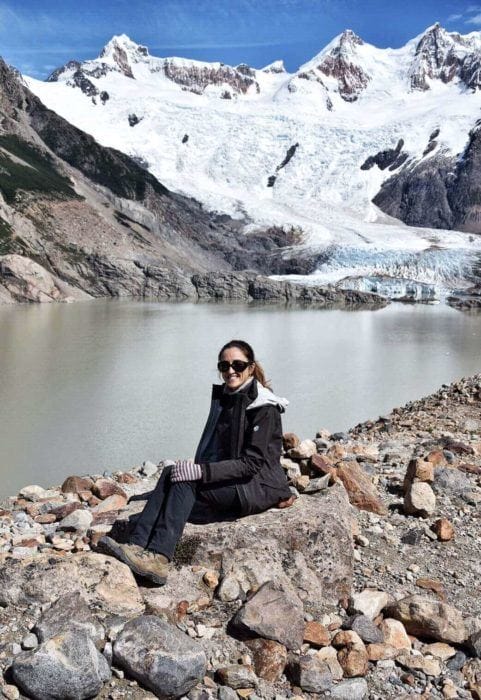
What to pack for Argentina
One of my top Argentina tips is to pack extremely wisely.
Even if you visit Argentina in the summer, the weather will vary dramatically from one place to the other. There will be very hot and humid days in Buenos Aires or Iguazu Falls and cold (and at times even very cold) temperatures in places like El Calafate and Ushuaia. You will need to be prepared for it.
If you are hitting the trails in Patagonia, bring all sorts of hiking gear with you, including very good hiking shoes, hiking pants, and a wind and rain-proof jacket (and a warmer one if you are heading to Tierra del Fuego). No matter where you go, pack a good pair of walking shoes.
Head over to my post, What To Pack For Patagonia , for a much more detailed account with all my best personal recommendations based on my travels through Argentina.
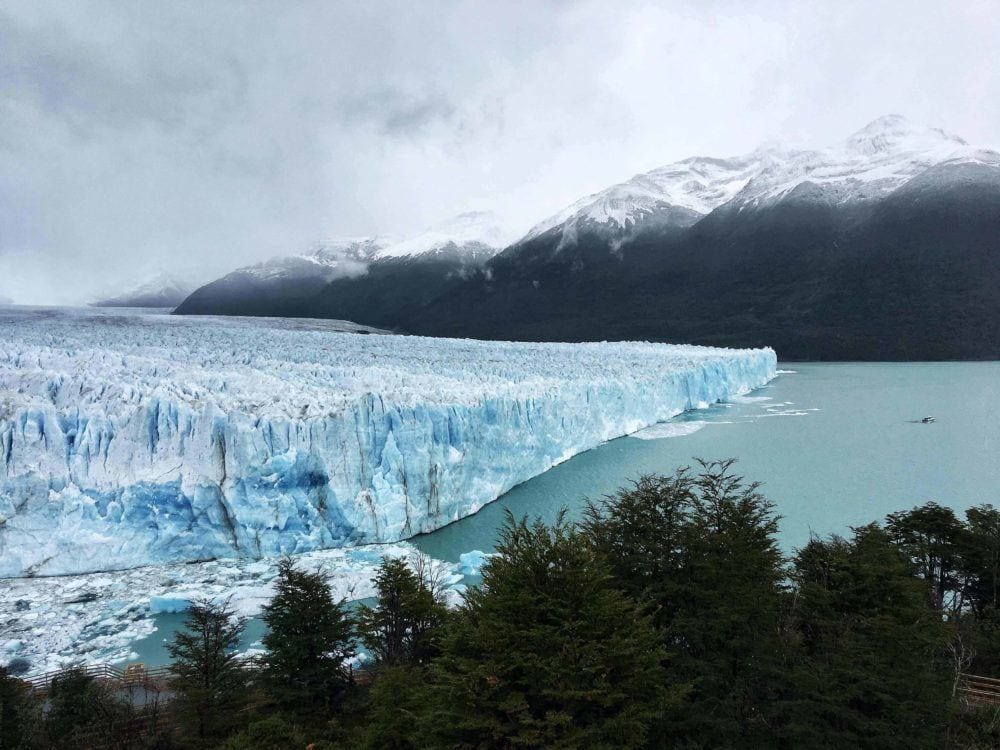
How long do you need in Argentina?
Here’s one of the most useful things to know about Argentina: if you don’t have enough time for a proper trip, postpone it until you do.
It might be controversial, but you want to spend at least 10 full days in Argentina. If you do any less, you might just leave disappointed because you won’t be able to even touch on the many amazing things to do in Argentina .
Argentina is the 8th largest country in the world—in other words, it’s massive. Ideally, you’d need three full weeks in the country, and even then, you’d barely be scratching the surface. You would have to plan everything in advance, booking your accommodation and a few domestic flights.
At a minimum, you will need 10 or 11 full days to explore the main sights in Buenos Aires, Patagonia, and Mendoza. With two full weeks, you would be able to see a bit more—e.g., add Iguazu Falls or even Puerto Madryn .
Pro Tip : When you’re planning your trip to Argentina, make sure to account for the travel days (the travel to Argentina and the days spent going from Point A to Point B in the country) because this can take up a lot of time! Also, make sure to include a few rest days in there, with fewer activities planned, especially if you’ll be hiking a lot.
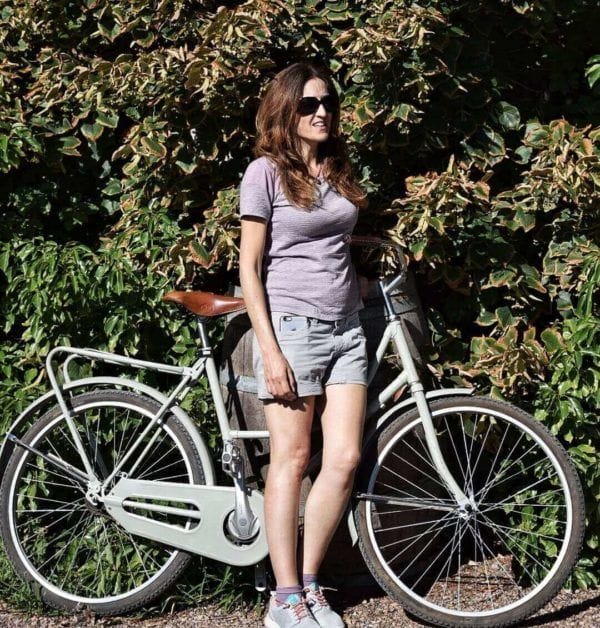
Consider joining a guided tour of Argentina
If you want to travel to Argentina but have no time to plan the route, or aren’t exactly a fan of it, leave it to the experts!
Many companies run excellent tours of Argentina: you will be shown the most beautiful places, have a tour guide or a tour leader taking care of all the logistics, and the only thing you’ll have to worry about is taking your camera with you.
Guided tours are usually more expensive then planning it out yourself, but not always, surprisingly. When you factor in the hours spent planning and booking things and the little hidden costs that pop up here and there, a guided tour might actually be the better choice.
You can also choose to do a mix of guided tours and self-travels throughout Argentina, which is another great option. For example, there are many multi-day trips out from Buenos Aires, multi-day hiking treks around Argentina’s national parks , and other options.
One of the most popular multi-day trips out of Buenos Aires is Iguazú Falls (which is really a must-see). You can do it on a day trip from Buenos Aires , but it’s highly recommended to spend at least a few days exploring.
For example, I recommend this Iguazú Falls Brazil & Argentina 3-Day In-Out Transfers from Buenos Aires ! The tour really takes a lot of hassle off you with all the planning, and you’ll get to visit both Brazil and the Argentinian side of the impressive falls.
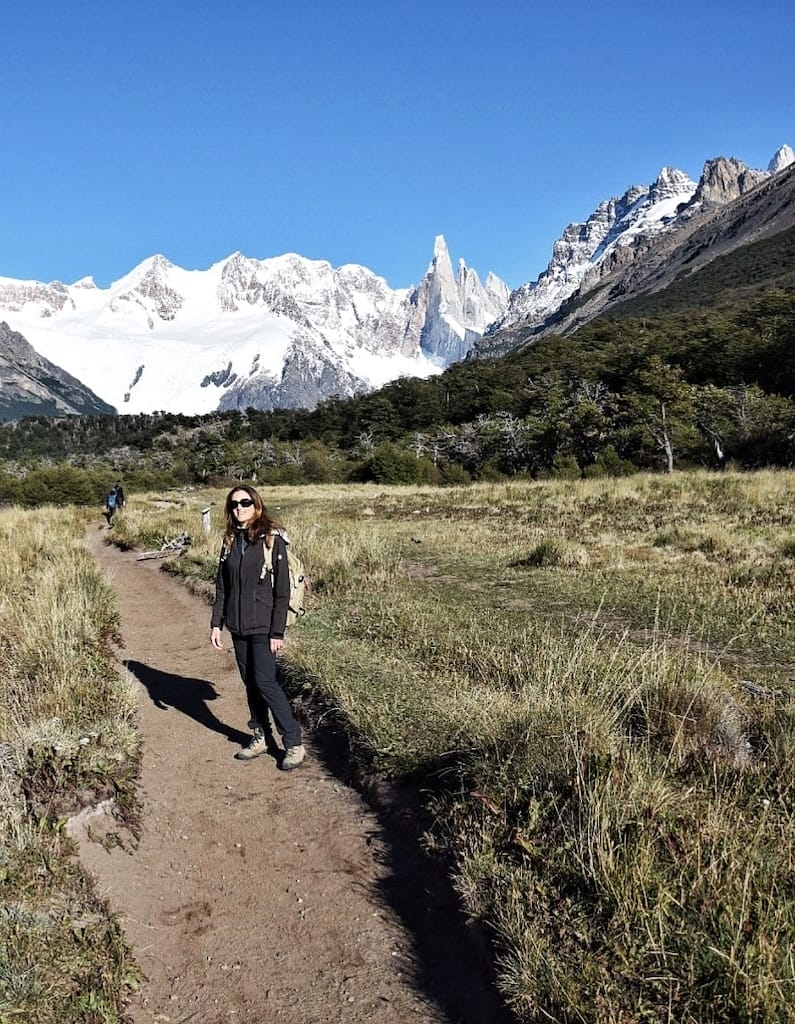
Do you need a visa for Argentina?
If you have a European Union passport or are coming from Canada, the United States, Australia, and Switzerland, you won’t need a visa to travel to Argentina as of 2024.
Your passport will be stamped, and you will get a tourist visa, free of charge, for 90 days from the date of arrival. The Argentina Reciprocity Fee has recently been suspended for US, Canadian, or Australian passport holders.
However, the suspension of the reciprocity fee isn’t set in stone, so here’s one of my Argentina travel tips for you: check the website of the Argentine consulate in your country to make sure you don’t need a visa for your trip to Argentina, just in case!

How to get to Argentina
Traveling to Argentina isn’t exactly cheap. My advice is to look for flights on engines such as Skyscanner. If your travel dates are flexible, you can set up a search system to show you the cheapest months to travel and, within that month, the cheapest dates. You can even set up price alerts, so as soon as you see a deal within your price range, make sure to grab it.
Google Flights is also offering a “ price match guarantee ” system. I haven’t used it yet, but apparently, if you purchase flight tickets off Google Flights and the price goes down afterward, you can submit a request to Google Flights, and they’ll refund the difference.
Supposedly, they simply guarantee you’ll always pay the lowest fee. This is, of course, a little bit more of a hassle and it’s still a new feature.
Ezeiza (EZE) airport in Buenos Aires is the main international hub in Argentina. The airport is connected via direct flights to North America, the United Kingdom, most European countries (there are direct flights from Rome), South Africa, and most South American countries.
Make sure to read my post How To Get From Ezeiza Airport To Buenos Aires to know everything to expect on this journey!
The other two airports in Buenos Aires are Aeroparque Jorge Newbery (AEP), located in Palermo and mostly serving domestic flights and some international flights to Uruguay, Chile, or Brazil, and El Palomar (EPA), which mostly serves budget airlines.
If you plan to fly to another Argentine destination from Aeroparque Jorge Newbery on the same day you land in Argentina, leave plenty of time to make it to the airport and for all formalities (checking in, going through security, etc). Aeroparque is 41 km (25 miles) from Ezeiza, and with the insane traffic in Buenos Aires it cane take up to two hours to get there.
If you are visiting Argentina as part of a longer trip across South America, you will find an overland border crossing from Bolivia, Paraguay, and Brazil at Puerto Iguazú, Chile.
There are several crossings, including one between Torres del Paine and El Calafate, Santiago de Chile to Mendoza, and from Uruguay (various crossings in Uruguay, including the ferry from Colonia del Sacramento in Uruguay).

More information about crossing the border to and from Argentina
There are several places to cross the border between Argentina and Uruguay, Bolivia, Brazil, Chile, and Paraguay.
Crossing the border is usually a rather easy process, but keep in mind that no fruits and vegetables can be carried into Chile. Whatever fresh food item you have with you needs to be either thrown away before crossing the border or declared on your immigration card.
The fines for omitting to do so aren’t high, but the Chilean authorities will take their time to measure every single item that can’t be carried into Chile to give you a proportionate fine. This may slow down the entire border crossing process—and aggravate anybody traveling on the same bus.
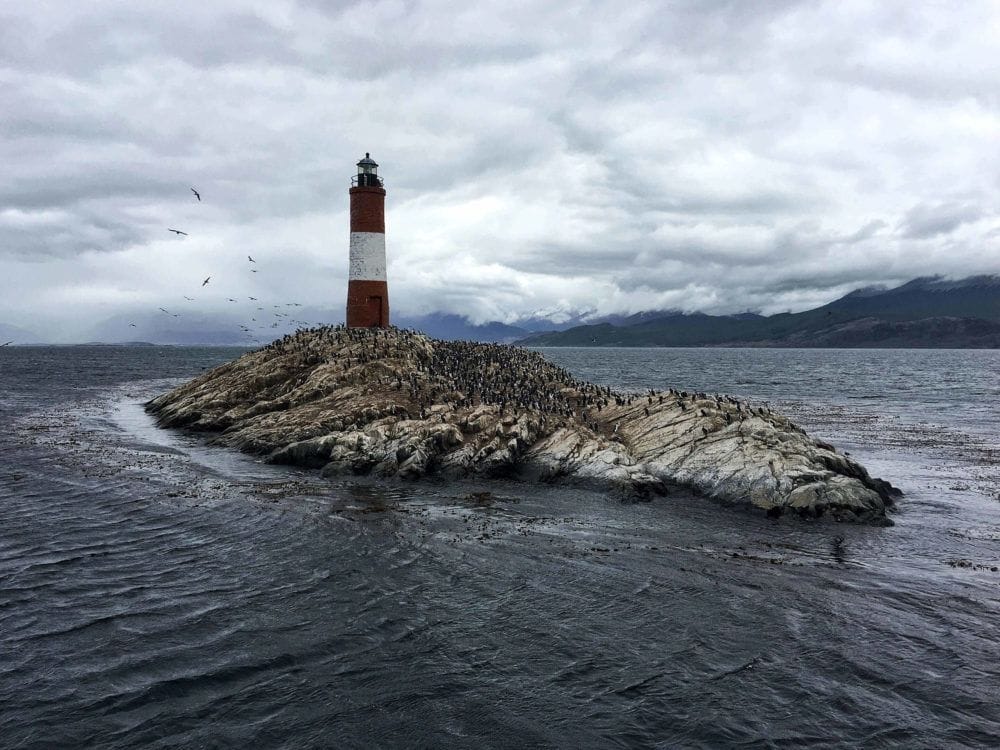
How to move around Argentina
Have I said Argentina is massive? Distances are enormous. To give you a few examples, the flight from Buenos Aires to Ushuaia takes almost 4 hours; it takes 20 hours by bus to travel from Puerto Madryn to El Calafate and 15 hours to go from Mendoza to Buenos Aires.
Considering this, unless you have a couple of months to explore the country, you’ll be better off catching the occasional flight.
Aerolinas Argentinas is the main national carrier and serves the entire country. You may also be able to get deals with low-cost airlines such as FlyBondi and JetSMART.
One thing to consider is that you will often have to connect in Buenos Aires to reach your final destination—for example, there are no direct flights from El Calafate to Mendoza or from El Calafate to Puerto Iguazu. This means that, at times, your entire day will be spent flying from one side of the country to another.
Buses in Argentina are usually punctual and comfortable. Seats can be fully reclined, and long-distance buses even pass around meals (don’t expect anything fancy). Seats typically have a personal screen, you will be given headphones, and many long-distance buses will have Wi-Fi.
You can check out the schedule and the prices of flights and buses in Argentina on the Omio App . It’s a really useful resource that’ll help you gather all the travel resources you need in Argentina.
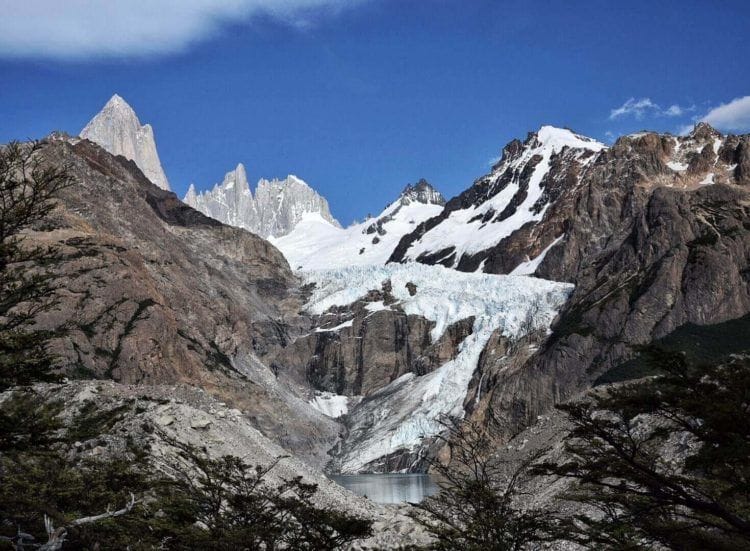
Another option to get around Argentina is to rent a car. You won’t need it in Buenos Aires, where traffic is terrible and public transportation works really well (more about it in a bit).
However, a car is certainly handy if you are visiting the northwestern province of Salta (you can plan a road trip around the Quebrada de Humahuaca), Tierra del Fuego, or hikes all around Patagonia .
Roads in Argentina are generally good, though in the most rural areas, you may encounter dirt roads.
There will be some toll roads, so having some spare change handy is recommended. You’ll need to keep your headlights on, even during the day. Driving is on the right-hand side of the road (like in North America and Europe, but unlike the UK, South Africa, and Argentina).
I recommend using a comparison site to check out the prices of car rentals in Argentina. My favorite one is Discover Cars . I’ve used it in many countries in South America and have only had great experiences.
Check out the rental conditions, as some companies restrict mileage. Finally, remember that most rental cars in Argentina have manual transmissions.
Make sure to read my post, A Guide To Renting A Car In Argentina , for all my expert advice based on my travels in Argentina.

How to move around Buenos Aires
Public transportation works really well in Buenos Aires, and there are plenty of buses, the SUBTE (metro), and trains you can count on.
Download the app Cómo Llego (translation: “How do I get there”) to check the best way of getting from one place to another. Google Maps also works well.
To use public transport in Buenos Aires, you will need a SUBE card. You can get this directly at a ticket window at any metro station or at any kiosk around town.
You can also count on a cheap and reliable taxi service. Taxis work by the meter, so you can be sure you will be paying a fair price. However, here’s another useful tidbit from this Argentina travel guide: check the best route before you get on.
While most drivers are honest, there are a few who will try to scam tourists and opt for the longest route to a destination. Speaking Spanish and/or acting confident as if you know the exact route will definitely help avoid a scam.
Uber has been very controversial in Buenos Aires over the years, but it does work and seems to be getting more efficient with each passing year. That said, Cabify is another rideshare app that seems to work well in Buenos Aires.
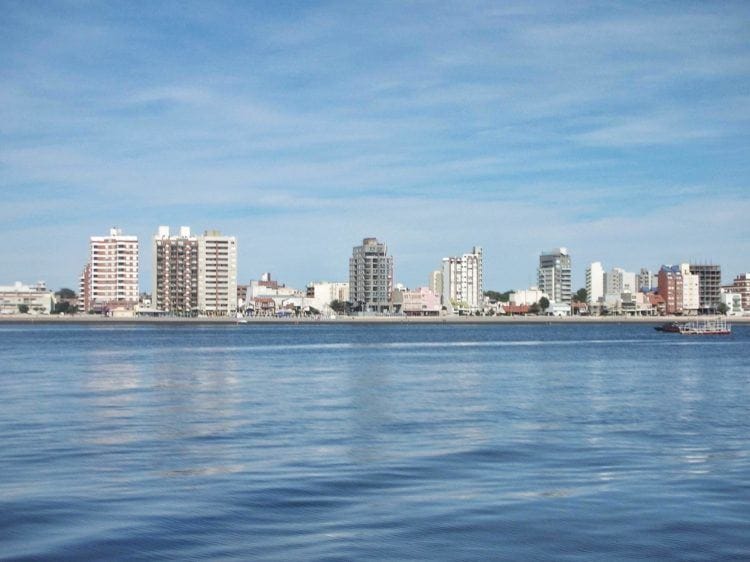
Get a good travel insurance
The healthcare system in Argentina is quite good and, at times, free even for foreigners. For example, my sister was not charged for an emergency appointment at the clinic in El Calafate (she had bad conjunctivitis).
However, it’s always better to purchase reliable insurance before your trip, especially if you’re planning to do more adventurous things (which many people are in Argentina).
Travel insurance should be a no-brainer for your own health and safety, as well as financial stability if some big accident does happen.
I highly recommend HeyMondo for international travel insurance, but you can read more about my thoughts on good travel insurance before settling on the best one for your travels.
Get a local SIM card
If you want to stay connected with your family and friends, one of my Argentina travel tips is to bring your unlocked phone with you and get a local SIM card as soon as you arrive.
The main providers are Personal, Movistar, and Claro. Personal has a stand right outside the terminal in Ezeiza airport, and all providers have shops in town where you can get your SIM card. Bring your passport with you as the shop will need a copy to complete the transaction.
To top up your SIM card, look for a kiosk or shop with your provider’s logo. It’s easy and fairly affordable.
Unlocking phones from the United States
For people coming from the United States with a U.S. phone provider, you might need to call your carrier to unlock your phone before your trip.
They will not unlock phones that aren’t paid off or on a payment plan (if you have a new phone through Verizon or AT&T and are making monthly payments on your contract).
If you can’t unlock your phone because it isn’t paid off yet, I recommend getting a cheap second phone that’s unlocked and paid off to use with a SIM card here.

Currency in Argentina
The Argentinian peso is the most fluctuating currency in South America, if not the world. Inflation rates are very high, and prices can change dramatically in a few weeks.
In fact, Argentina actually devalued their peso by more than 50% at the end of 2023/beginning of 2024. This could also lead to some more major price fluctuations going forward.
Cash is king in Argentina. While credit cards (Visa and Mastercard, but not American Express) are accepted in hotels and restaurants catering to tourists, they aren’t as widely accepted in smaller shops.
It’s much easier to use cash rather than credit cards most of the time, as a surcharge is often applied to card payments. Make sure to always carry cash with you.
However, there’s another issue: ATMs in Argentina are very expensive. Even though your bank may not charge you for any withdrawal you make while in Argentina, local ATMs will apply a fee of up to $10 USD for any withdrawal and put limits on the amount of money you can withdraw in a single transaction.
There really is no other way around it, and you should factor withdrawal fees into your trip budget unless your bank refunds all ATM fees and foreign transaction fees.
Dollars and Euros are widely accepted—in fact, bring some with you and plan to either pay directly in USD or € (many shops will have the coto—daily exchange rate—listed at the register) or exchange them when you need to.

Money exchange in Argentina
This obviously brings the next question: how to exchange foreign currency in Argentina?
Read carefully, as I have one of the most important Argentina travel tips for you.
First of all, don’t exchange money at the bank in your home country or at your hotel in Argentina (only do it as a last resort). The exchange rate is really bad.
Instead, try to exchange your US dollars or euros at the Mercado Azul (blue market) – basically the black market.
The exchange rate is much better, and you can get almost twice as much for a dollar at the blue market compared to the official rate.
Make sure to check the exchange rate for the dólar official (official exchange rate) on sites such as XE.com (they also have a good phone app) and compare it to the rate of the dólar informal (also known as the blue dollar)—you can do that on sites such as Ambito.
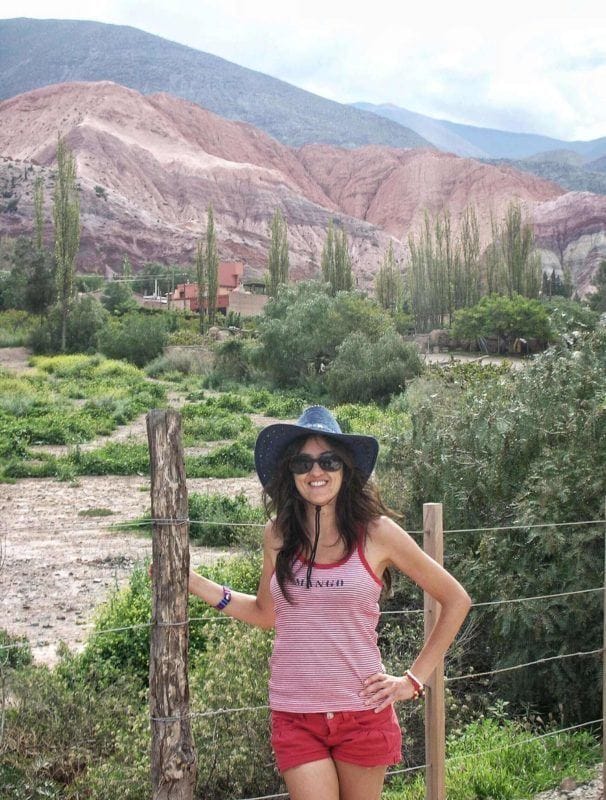
To give you an idea, when I changed USD on the black market in 2015, I got an exchange rate of 14 ARS to $1 USD versus the official rate of 8 ARS to $1 USD.
At the time of first writing this Argentina travel guide in 2022, the official exchange rate was about 124 ARS to $1 USD, whereas a blue dollar was sold for 226 ARS.
At the time of updating this post in 2024, the official exchange rate is about 850 ARS to $1 USD, whereas a blue dollar is sold for around $1,025 ARS (this also gives you the perfect example of the wild fluctuations of the ARS in recent years).
To exchange your USD at the blue dollar rate in Buenos Aires, look for an arbolito (literally “small tree,” but it is used to refer to a money changer in Argentina). There are many in the area of Microcentro in Buenos Aires – chances are you will hear them call around “cambio!” (exchange).
In other towns and cities, the best way to find a blue dollar exchange is by hearsay – ask at your hotel or hostel. That’s how I found one in Mendoza.
Tipping in Argentina
The rules for tipping in Argentina are very similar to those that are commonly applied in Italy. In general, you are not expected to tip.
Some restaurants will add a service charge, but if you want to leave a tip, you can usually just round up the final bill or add a small tip of no more than 10%.
Check out my post A Guide To Tipping In Italy if you want more information on how the practice transfers over to Argentina.

Learn some Spanish before you go
Most people in Argentina speak some level of English; a lot speak Italian, and when all else fails, they will be happy to communicate with you via sign language. In other words, don’t worry about the language barrier. You will definitely get by during your trip.
Having said so, I usually recommend learning at least a few words of the local language before traveling to a new place, and the same applies here: one of my Argentina travel tips for you is to learn at least some basic Spanish before your trip.
A word of warning, though: the Spanish spoken in Argentina is actually fairly different from that spoken in Spain or even Mexico.
In general, it’s a bit slower, the intonation is different (and actually more similar to Italian), some sounds and hence words are pronounced completely differently, and in fact, different words are used to refer to the same thing.
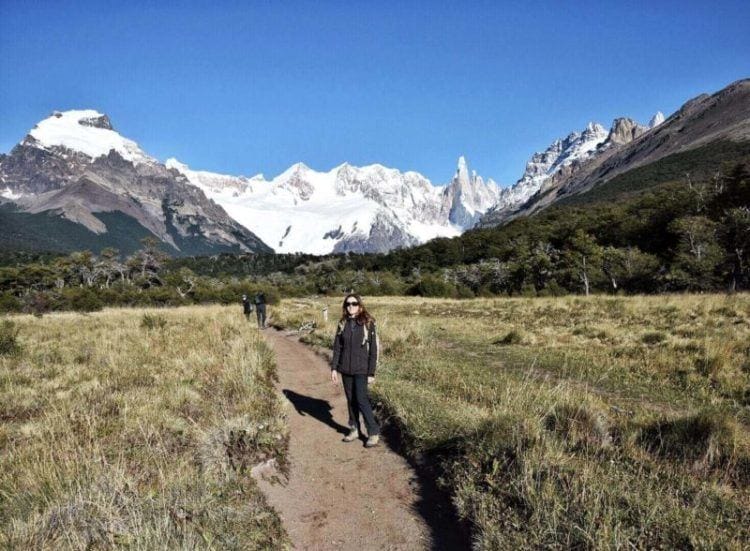
Is Argentina safe?
I have always found Argentina to be a safe country, and the people are truly and genuinely friendly. That said, it’s worth taking some precautions when visiting Argentina—though not particularly different from those you’d use in other places.
Keep in mind that Argentina is currently experiencing a declining economy , and some studies show this may correlate with a higher crime rate (especially property crime).
Keep an eye out for scams—they are no different from those you’d encounter in other countries. Also, watch out for pickpockets in large cities, especially Buenos Aires.
Keep an eye (and a hand) on your belongings when riding the metro or the bus and in markets: make sure your bag/backpack is properly closed, and you prefer a crossbody bag. Wear your backpack in front of you when on the bus or metro, and close your taxi window just in case someone drives by on a motorbike and snatches your phone out of your hands.
Finally, watch out for motochorros – muggings.
Here are some additional Argentina travel tips to keep you safe:
- Hop on a taxi to take you back to your hotel at night, especially if it’s a long walk away.
- Avoid walking around alone in poorly lit areas.
- Learn some basic Spanish to help you get by in taxis, on the bus or metro, or to ask for help.
- Keep a low profile—try not to appear too much like a tourist, and don’t flash your belongings, such as a camera, phone, or jewelry.
- Don’t leave your phone on the table when you are eating or having a drink.
- Carry a copy of your passport with you – but not the actual passport.
- If you are being mugged, don’t fight back.
Make sure to get good insurance, like HeyMondo , for your trip to Argentina. Some travel insurance can actually be pretty handy, even for theft, missed flights, and other travel-related problems.
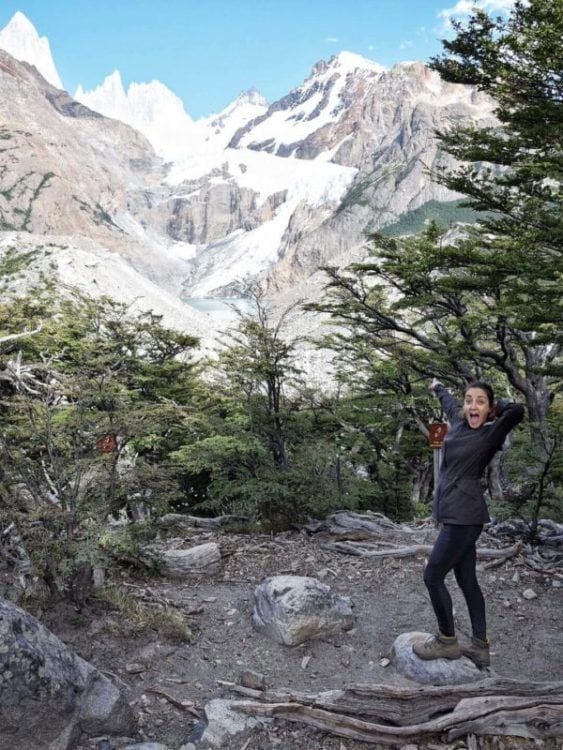
Visiting Argentina as a solo female traveler
Argentina is a safe destination for solo female travelers. I have been there three times, two of which were on a solo trip, and I had a fantastic time.
If you are visiting Argentina by yourself, plan to stay at hostels (you can almost always get a private room if you don’t want to stay in dorms) and take advantage of their social spaces and events to meet other travelers. You’ll have a great time.
Speaking Spanish will be a bonus as it will help you connect with locals.

Dogs are everywhere
One of the things to know about Argentina is that the country is packed with dogs. It’s not uncommon to come across a paseo perros (a professional dog walker) walking up to 12 dogs in Buenos Aires, especially around the residential areas of Recoleta and Palermo.
However, in more rural areas, there are many stray dogs. Most are quite friendly, and chances are they will follow you around for pets. They are typically well fed and taken care of by volunteer organizations, to which you can donate.
With so many dogs around, watch out for dog poop – you definitely don’t want to step on it!
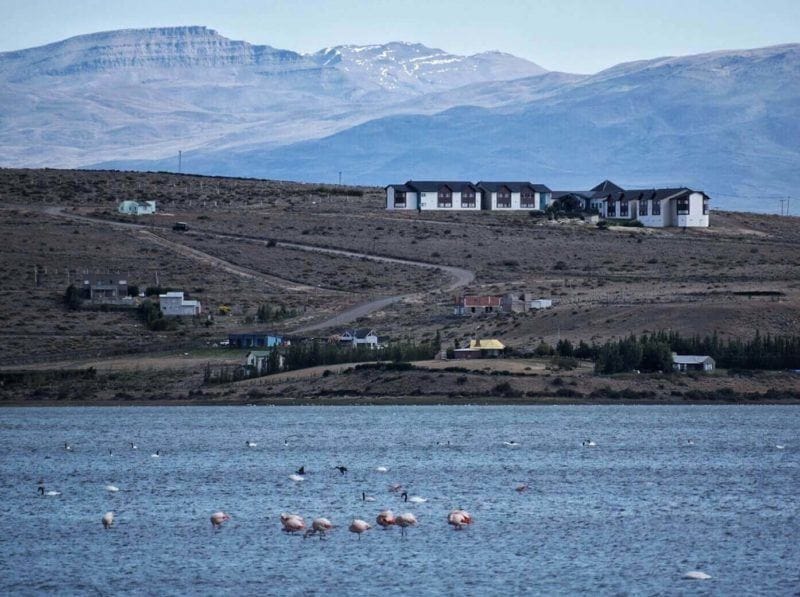
Where to stay in Argentina
The range of places to stay in Argentina is incredible: from hostels to hotels, from bed and breakfasts to guest houses and self-catering apartments, there is something for any budget.
The standard of hostels is generally good: clean, well equipped, with a nice vibe. They even organize nights out, parties, and dinners for very good prices.
For something really unique, consider staying in an estancia (called finca in some parts of the country), a ranch. Estancias are located out of town, usually in rural areas. There are some fabulous ones in Patagonia, but you will find a nice selection also close to Buenos Aires.
Check out my post, Where To Stay In Buenos Aires , for your time in the capital city. There are so many amazing options for all budgets and types of travelers.

Eating and drinking in Argentina
Food in Argentina is delicious: the country is a real paradise for meat eaters, and enjoying a good asado (a mix of barbecued meats) is a must.
Vegetarians and vegans visiting Argentina used to have a hard time, but things have improved a lot in recent years, and the choice of vegan restaurants is now quite large, especially in cities such as Buenos Aires and Mendoza.
Thanks to its Italian heritage, you will also find lots of good Italian food: homemade pasta and pizza are available in many restaurants, making the lives of vegetarians and vegans a bit easier.
Empanadas (small calzones with various fillings) are a good option for cheap and tasty food. You will find them served as appetizers or snacks in all restaurants, eateries, markets, and even on the streets. Another common thing to eat is humitas (tamales made of corn dough).
Dulce de leche (caramelized milk, almost nauseatingly sweet) is very popular and pretty much spread on anything, or so it seems.
Alfajores are also popular: they are two rounded dry biscuits joined together by (usually) dulche de leche and often covered in chocolate. Thanks to the Italian heritage, gelato is very good in Argentina, and you’ll find it easily.

Argentinians typically eat a small breakfast consisting of café con leche (coffee with milk) and medialunas , similar to small Italian cornetto. International hostels and hotels offer a bigger variety of breakfasts, which usually include fruits, cereals, and also eggs.
Finally, don’t try to have an early dinner. Locals won’t even consider eating before 8:00 pm!
In a country where meat is a staple, it almost goes without saying that wine is fabulous. The biggest producing regions are Mendoza and Cafayate, where you can go on a wine-tasting tour.

Beer is also a very popular drink, and in recent years, craft beer has become more easily available. The best off-the-counter beers are Quilmes and Salteña, which are more popular in the region of Salta. They come in very large bottles, too!
Last but not least, one drink you need to try when visiting Argentina is mate – a strong infusion of yerba mate, a bitter herb high in caffeine. Argentinians swear by it, but to be honest, it takes a bit of an acquired taste to appreciate it (and I haven’t acquired it even after three trips).
What’s special about it is the culture surrounding it: first of all, many locals never leave their house without their mate.
They will carry around a thermos of hot water (strictly at 84°C), a bag of yerba mate, their cup, and bombilla—a metal straw used to drink the infusion. Most importantly, locals normally pass around the mate and share it in a group, all drinking from the same straw. It’s up to you if you want to try it or not!

Movies and series to watch before visiting Argentina
Are you still looking for inspiration for your trip to Argentina? Consider reading a book or watching a movie or even a Netflix series to get a sense of the country, its culture, and its beauty.
I have a full post dedicated to the best movies set in Argentina . Don’t miss Relatos Salvajes (Wild Tales) – a movie of 6 short stories that are hilarious and, at the same time, sad. You should also watch El Secreto de Sus Ojos (The Secret in Their Eyes), which won the Oscar for Best Foreign Language Film in 2010.
When it comes to Netflix series, I am a massive fan of Casi Feliz (Almost Happy). This series is based in Buenos Aires, and the main character is Sebastian, a popular radio host who finds himself regularly in the most absurd situations. It’s sweet, funny, and bitter at the same time.
Pin It For Later!
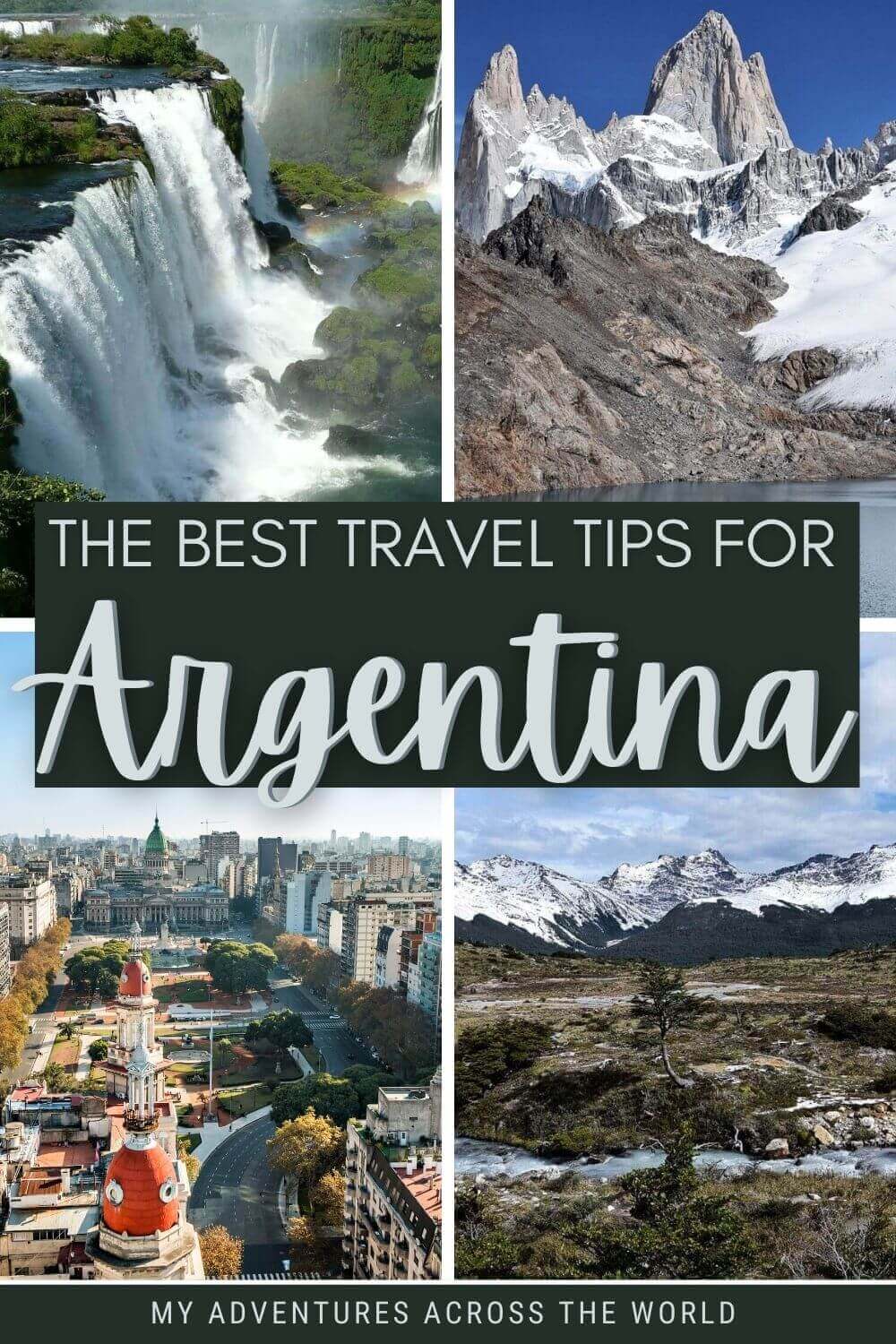
Claudia Tavani
Claudia Tavani was born and raised in Italy, but she also lived in New York, Denver, and London. She's a professional travel blogger and certified travel designer who loves planning trips, sharing travel hacks, and packing lists so that you don't have to. Owner of My Adventures Across The World, solo traveler, cat mom to Minnie. Claudia has been featured by the Lonely Planet and the Huffington Post. She has visited more than 80 countries.
6 thoughts on “22 Best Argentina Travel Tips”
very helpful! thank you!
Claudia, non mi stanco mai di leggere i tuoi blog sull’Argentina. Sono migliori delle guide che ho guardato finora! Complimenti e grazie mille
Grazie a te per il sostegno!
Very helpful article. Question, do they have virtual sim cards now?
Do you have an update for now that Milei has become president and the ARS has fallen steeply?
What’s a good hotel rate for non-tourists?
Hi! You can get a Virtual Sim Card on Holafly – it’s what I would use. I am not sure what kind of update you are looking for regarding the new president. And with regards to hotels – well, hotels are for travelers, so you are going to have to pay the travelers’ fare. But – if it helps – if you pay cash they prefer it!
Otherwise, you can use Google maps to look for hospedaje or hostería, but you must be prepared for a long WhatsApp back and forth and to have to make a bank deposit for the deposit IMMEDIATELY within 24 hours to hold the room. Provided you are ok with jumping through those hoops you then will have to lower your comfort standards.
Don’t say I did not warn you!
Leave a Comment
This site uses Akismet to reduce spam. Learn how your comment data is processed .
Privacy Overview

The 25 Best Places to Visit in Argentina: For Hikers, Sightseers and Wildlife-Lovers Alike
By Author Steph Dyson
Posted on Last updated: 24th January 2024
Argentina, one of the popular gateways to South America, plays host to some of the southern hemisphere’s most dramatic landscapes: think vast, millennial-old glaciers, historic bodies of water, and the weather-chiseled ridge of the Andes Mountains separating it from its neighbor, Chile.
But Argentina isn’t just a place defined by its natural magnificence.
It’s also home to one of the most bewitching capital cities – an unmissable destination for foodies and football lovers alike – as well as curious Welsh settlements, chaotic colonies of animals, and sunkissed vineyards producing world-class wines.
I’ve had the fortune to explore practically the entire country, traveling slowly along the length and breadth of Argentina as part of multiple trips spanning a couple of months in total.
Off the back of that research, here are what I consider to be the best places to visit in Argentina.
Click to navigate this article:
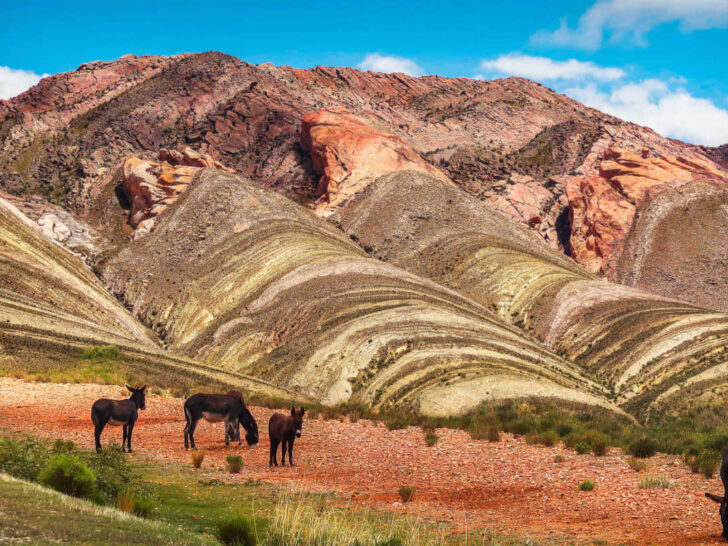
Northern Argentina
1. track rare wildlife in the world’s second-largest wetlands, the esteros del iberá .
Home to the world’s second-largest wetland in the world, the Esteros del Iberá (Iberá Wetlands), are a remote, pristine, and hugely important ecosystem in Argentina.
Comprising a 13,000-km 2 nature reserve in the north-central province of Corrientes, this protected area is one of the most important freshwater reservoirs in South America and houses an abundance of wildlife.
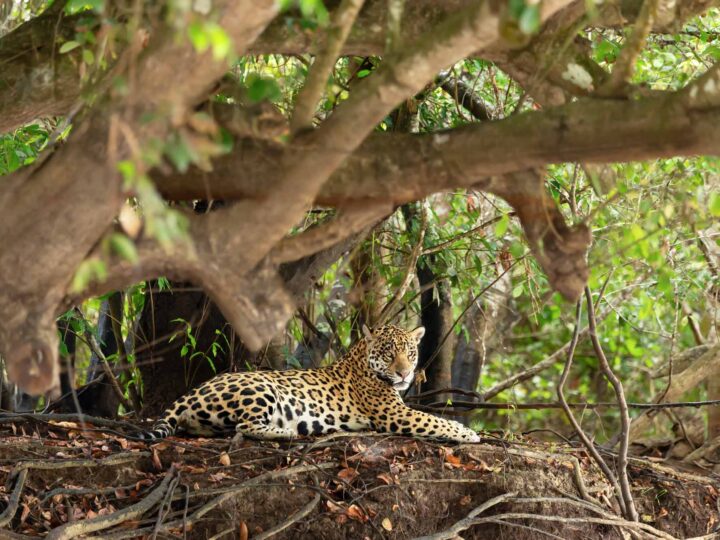
Over 320 bird species are resident here, making it a top destination for birders, while capybara, maned wolves, giant anteaters and even a thriving population of jaguar – reintroduced in 2021 by conservationists – make the Esteros del Iberá one of the best places in Argentina to spot wildlife.
Situated a three-hour journey from the nearest airport, getting here is part of the adventure and explains why it remains such a remarkably untouched and unvisited part of Argentina.
Planning Your Trip to Patagonia?
Save time, stress & money with a customized travel itinerary planned for you by a Patagonia expert
What previous clients have said:
Going to a new and exciting place is an adventure AND has its challenges. Being able to carve out an in-depth plan with someone that has been there and whom you can trust was extremely helpful. We felt comfortable embarking on a six-week backpacking trip with kids ages 8 and 11 with Steph on our team. Her expertise and ability to hear what we wanted gave us a great jumping point for planning. Her advice and wide array of options also allowed us to be flexible. It also gave us peace of mind knowing that we had someone we could call if our plans went awry. Every one of Steph’s recommendations panned out to be incredible pieces of our trips and we would highly recommend her!
2. Appreciate one of the world’s natural wonders, Iguazu Falls
Step aside, Niagara Falls: there’s a much more impressive set of waterfalls awaiting in Argentina. Comprising 275 cascades and spanning an area 2.7 kilometers wide, Iguazu Falls are a remarkable 195 meters high – dwarfing Niagara, which is a measly half the size.
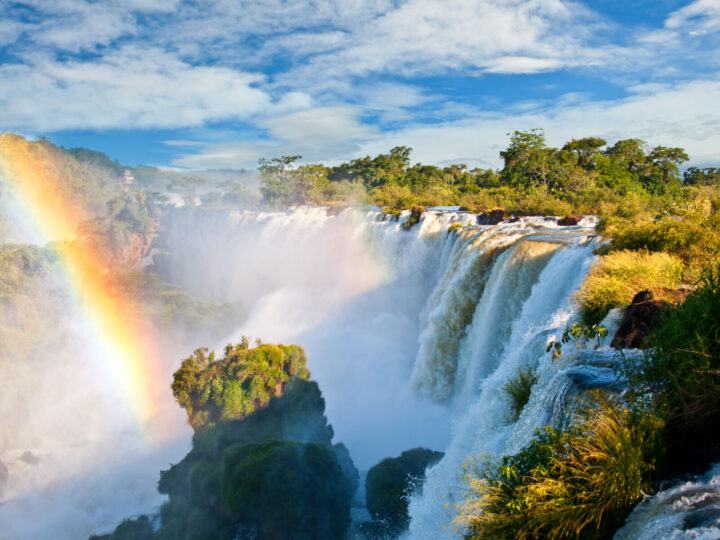
Though you cannot see all of the falls that make up this vast fury of water from the Argentine side – you’ll need to cross into the Brazilian side to tick off them all – visiting Parque Nacional Iguazú (Iguazu National Park) in Argentina will still grant you spellbinding views of these dramatic falls.
Hike through the dense jungle of the national park – where toucan and brown capuchin monkeys might be glimpsed – to the Garganta del Diablo (the Devil’s Throat), where a platform perched above this fall gives you utterly unforgettable views as the water cascades down with a deafening roar.
3. Road trip to the land of “white gold”, Salinas Grandes
Neighboring Bolivia might take the crown for the world’s largest salt flats , but Salinas Grandes in the Argentina puna remains a dreamlike destination and a worthy place to visit in Argentina.
Argentina economy update
The Argentine economy is a huge mess at the moment, with inflation expected to hit 200% this year. Using Argentine pesos can therefore be a nightmare – and mean you lose a lot of money. The blue dollar (an unofficial exchange rate that gives you a better conversion than the official rate) is around, but if you want to avoid carrying lots of cash, you can now pay using your credit card and get an exchange rate similar to the blue dollar rate. You must choose to pay in Argentine pesos (not USD!) to secure this rate.
Both Mastercard and Visa give you what is called the MEP rate, which is almost as good as the blue dollar rate. Mastercard will charge you the official rate but refund you the money a few days later; Visa will charge you the MEP rate from the beginning.
If you do want to have some Argentine pesos for paying in cash (which I highly recommend as you will need them for some restaurants and attractions), it’s best to use Western Union, whereby you send cash to yourself using the Western Union app and then withdraw it in Argentine pesos from one of their branches in Argentina. Bear in mind, those in El Calafate and Ushuaia can run dry of notes, so it can be easiest to do this in Buenos Aires.
Additionally, you can bring USD (unmarked and untorn hundred dollar bills), which you can exchange at “cuevas” (unofficial exchange houses). These will be able to give you the blue dollar rate and any hotel owner will be able to tell you where your nearest one is. Souvenir shops in most parts of the country will be able to give you pesos in exchange for dollar bills – although they might not give you the best rate.
Avoid cash machines. Currently, the maximum withdrawal is the equivalent of $15 USD in Argentine pesos and it will cost you $10 USD in fees.
Spanning more than 500 kilometers and with salt melting away into the distance as far as the eye can see, this curious, high-altitude landscape lends itself to comical perspective photography. Visit by hiring a vehicle or taking a tour from Purmamarca, Jujuy, or Salta; en route, you’ll catch dazzling views of splendid lagoons and walnut plantations.
4. Photograph the rainbow hues of the Quebrada de Humahuaca
Argentina’s northwestern provinces are packed with otherworldly sights and the Quebrada de Humahuaca (Humahuaca Canyon) is no exception. This 155-kilometer-long mountain valley is famous for its vibrantly colored rock formations as well as for its historic, Quechua-speaking villages.
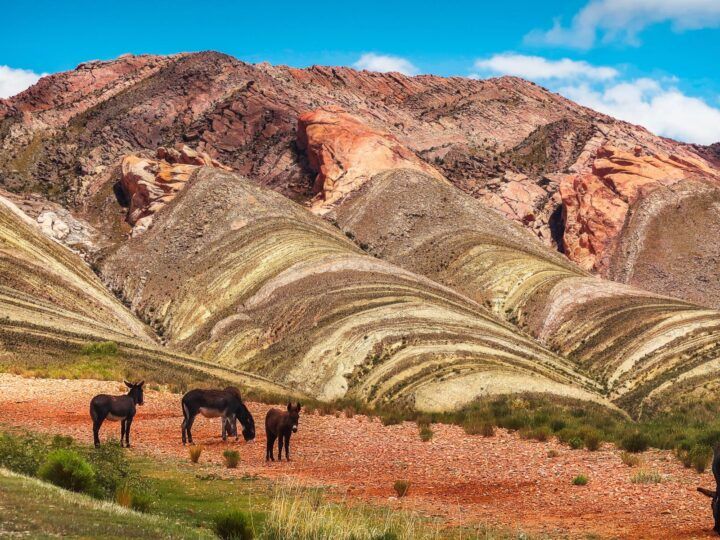
To the south, the Cerro de Los Siete Colores (Hill of Seven Colours) lives up to its name with a magical rainbow of hues caused by the mineral content of the soil and towers over the colonial village of Purmamarca.
Adobe houses rub shoulders with the centuries-old Iglesia de Santa Rosa, while a daily market on the town square makes this an excellent place to purchase sweaters and blankets wove from llama wool.
5. Discover the enchanted village of Iruya
Still within Quebrada de Humahuaca, but miles away from the typical tourist trail, the enchanting village of Iruya lies within the sheer walls of the canyon, with many of its adobe houses built up into the valley sides.
The setting is dramatic; clamber up to the Mirador de la Cruz to appreciate the full magic of this village or head to Mirador del Condor to catch sight of Andean condors, which typically take to the sky around 3pm.
6. Appreciate colonial architecture in Córdoba
As the country’s second-largest city, Córdoba is an easy pick when it comes to choosing the best places to visit in Argentina. You can feel both the pre-Hispanic and colonial influences in much of this pretty city, which houses some of the best-preserved colonial buildings in the whole of Argentina.
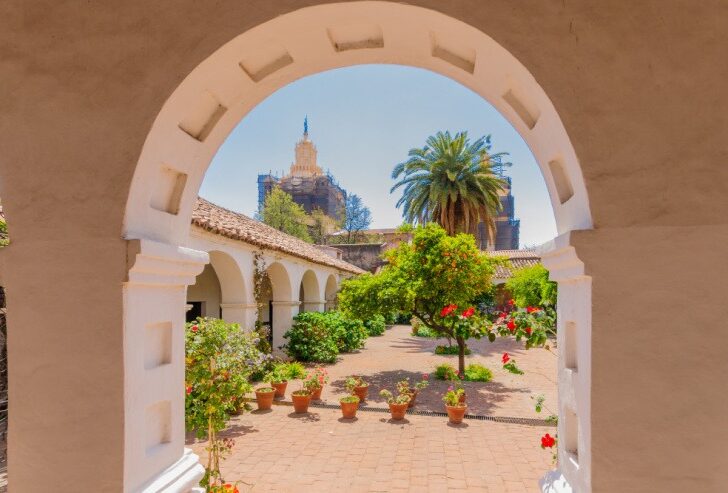
Crowned the Cultural Capital of the Americas in 2006, Córdoba thrives on its blend of old and new. With three universities in the city, it’s no wonder there’s plenty to do here.
Browse one of its four municipal galleries – covering everything from fine art to contemporary work – and spend an evening in the Güemes neighborhood, where independent craft stores and crowded bars attract students and visitors alike.
7. Tour Talampaya National Park in a 4WD
The dusty stone pillars of Parque Nacional Talampaya (Tamlampaya National Park), chiseled away by millennia of rain and wind count as some of the most surreal rock formations you’ll find in Argentina.
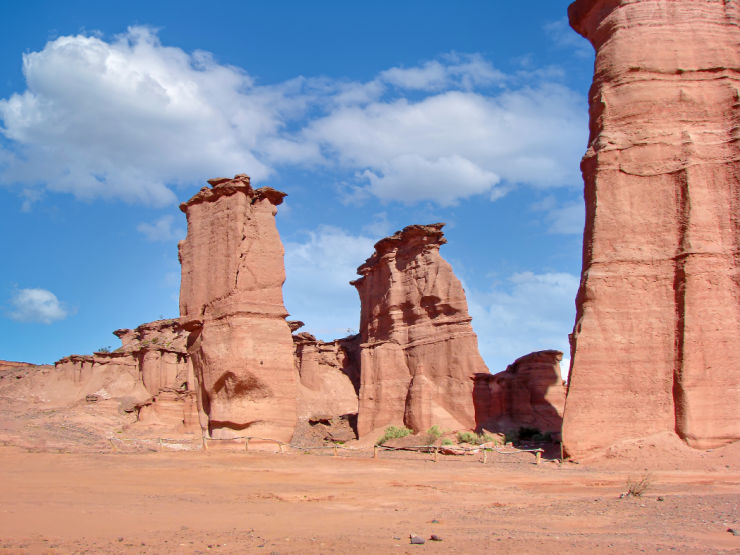
Lying in the eastern province of La Rioja, this desert landscape is best explored by 4WD and you must take a guide; visit Talampaya’s official website to arrange a tour.
Most head directly to the Cañón de Talampaya, where guanaco, rhea, and condors can be sighted, as well as its focal point, the Cajon de Shimpa, a deep gorge with towering, 80-meter-high walls that are only seven meters wide at its base.
8. Learn about Andean cultures in Salta
Much of Argentina’s northwestern regions have more in common with Bolivia than they do Argentina. Salta is a fine example. While its handsome buildings and ornate church, the Iglesia San Francisco, belie its colonial origins, this city is packed with museums dedicated to the pre-Columbian cultures that came before.
One of the best is the Museo de Arequeología de Alta Montaña , which specializes in the Inca and their child sacrifices – with the bodies of three such children discovered on a nearby mountain peak now, controversially, on display in this museum.
There’s so much to see and do in the city, and our comprehensive guide to the best things to do in Salta will see you adding it to your Argentinian itinerary in no time.
Northeastern Argentina
9. get familiar with argentine literature in san antonio de areco.
Located about an hour and a half northwest of Buenos Aires, the town of San Antonio de Areco is the perfect day trip from the capital. Known as the National Capital of Tradition, it’s rich in the history and culture of the Argentine countryside and blessed with a wealth of museums, including the Museo Gauchesco Ricardo Güiraldes .
Dedicated to the author Ricardo Güiraldes, it also covers the culture of the local gauchos, the name for the cowboys who are both a folk symbol and a typical feature of pampas life in Argentina.
10. Drink, dance, and dine in Buenos Aires
Most visitors to Buenos Aires pass a few days in its dazzling capital, home to Parisian architecture and Latin passions.
Unsurprisingly, Buenos Aires is home to many of Argentina’s top and most well-known tourist attractions , and it’s remiss to spend time in this city without dancing in a tango hall ( milongas ), dining like a king in a local steak house ( asado ), or making a pilgrimage to the Cementerio de la Recoleta to track down Eva Perón’s grave .
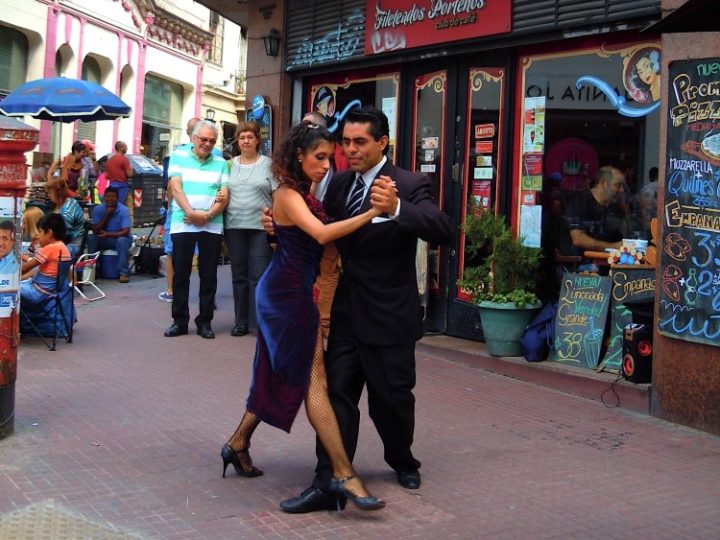
In the south, the working-class neighborhood of La Boca has transformed into a prime tourist destination.
Wander through the open-air museum of El Caminito, where tenement shacks have been transformed with a lick of brightly colored paint, before catching a beautiful game at La Bombonera, where legendary team Boca Juniors play.
For a truly porteño experience, don’t miss the Feria de San Telmo, a weekly Sunday market hosted in one of the city’s prettiest neighborhoods. Craft stalls and tables groaning beneath the weight of countless antiques await, while you can even catch music performances and impromptu tango dancing, too.
11. Surf the waves of Mar del Plata
Mar del Plata, a city 415 kilometers south of Buenos Aires, is a popular escape for porteños during the hot, summer months. With its beachside hotels and 47 kilometers of beaches, it’s got everything for a spot of relaxation – although, during summer, you’ll find it’s got too many other visitors, as well.
However, surfers have found their Mecca, particularly as the best surfing conditions are found between April and October.
Head to Playa Grande for the most consistent breaks and, if you’re new to surfing, sign up with one of the many surf schools to guide you in choosing the location and practicing your moves before you hit the water.
Northwestern Argentina
12. summit the lofty peak of volcán aconcagua.
The highest mountain outside of the Himalayas, Aconcagua invites adventure seekers and adrenaline junkies looking to summit one of the “Seven Summits” – the highest mountains in each continent.
Just a few thousand people try to reach its 6,960-metre peak every year and even the easiest route – the route up the Northwest Ridge – isn’t technical but still poses a real challenge due to the altitude.
All hikers must apply for a permit in nearby Mendoza and travel with experienced trekkers or, better still, a guide, is highly recommended.
13. Go wine tasting in viticulture capital Mendoza
With its vine-slung valleys fed by a clever system of irrigation and backdrop of snowy Andean peaks, Mendoza is itself a remarkable place to visit in Argentina. However, oenophiles from across the globe head here in order to sample the region’s most famous export: malbec.
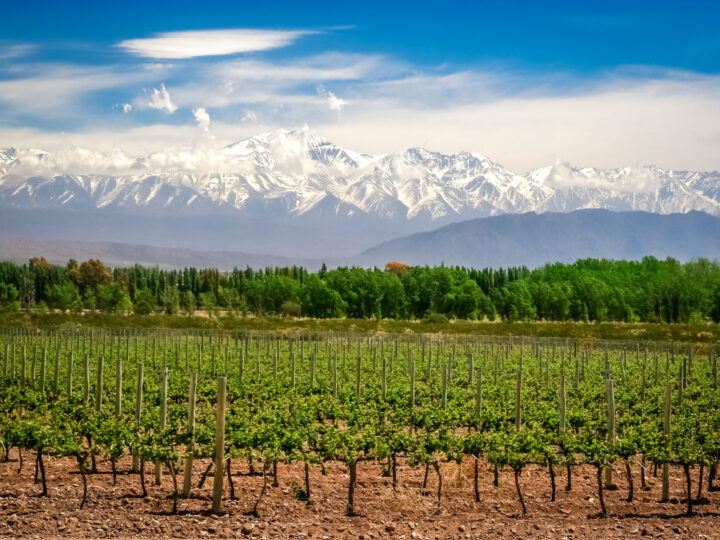
Local wineries abound and those in nearby Maipú can be easily visited either on a wine tour directly from Mendoza or using public transport. Head further afield to the wineries of the Valle de Uco or Luján de Cuyo to encounter those at the forefront of Argentine wine production.
Southern Argentina (Patagonia)
14. conquer the summit of volcán lanín.
Lying in the far west along the ridged backbone of the Andes Mountains, Parque Nacional Lanín (Lanín National Park) is another of Argentina’s most spectacular protected areas .
If you’re keen to summit a volcano but don’t quite have the expertise – of the lungs – for Aconcagua in the north of the country, the perfectly conical Volcán Lanín might be the perfect alternative.
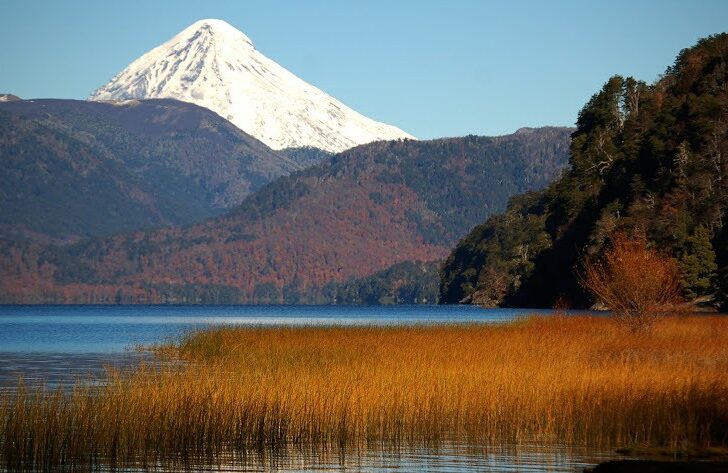
Set within forests of southern beech typical to Patagonia and with other easier hikes available, the route to the 3,776-metre summit of Volcán Lanín normally follows the north face and takes two days.
While it remains a challenging activity and one for which it’s highly recommended to use the services of a local guide, hiking to the top of this mountain – and absorbing the incredible panoramic views of lakes and mountains from its peak – will be utterly unforgettable.
15. Drive the Ruta de los Siete Lagos
Ruta 40, the highway that slices down through Argentina from the very northern tip of the country to the far south, is considered one of Patagonia’s finest road trips . But the section dubbed Ruta de los Siete Lagos (Route of the Seven Lakes) is perhaps the most picturesque of all.
Connecting San Martín de los Andes in the north with Villa La Angostura 108 kilometers south, this drive takes you along the banks of seven shimmering lakes, with the scenery tied to the seasons.
Drive it in summer (December through February) for landscapes vibrant green or travel here in autumn (March and April) when the trees turn burnt umber.
16. Go hiking and biking from Swiss-inspired Bariloche
Sitting at the heart of the Argentine Lakes Region and within the mountain and lake-scattered landscapes of Parque Nacional Nahuel Huapi (Nahuel Huapi National Park), Bariloche (sometimes known as San Carlos de Bariloche) attracts visitors in their droves.
Summer is peak season for visitors, who head to this town on the banks of Lago Nahuel Huapi to enjoy everything this capital of adventure has to offer.
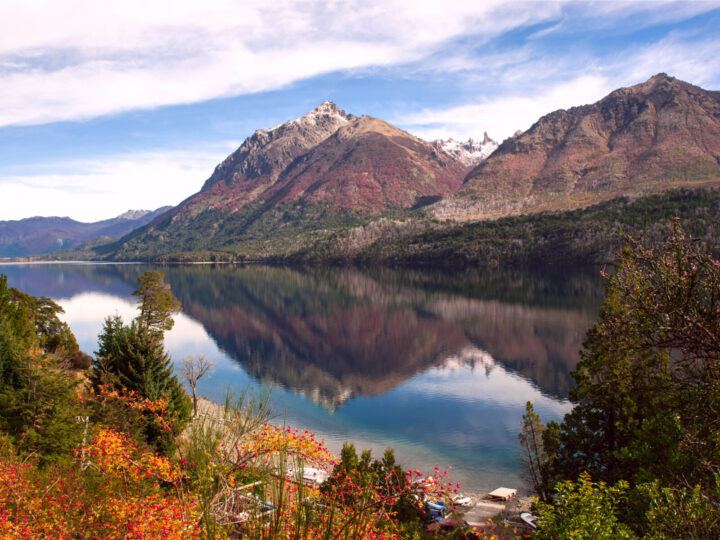
Whether you’re keen to mountain bike on lakeside gravel paths or head up into the snow-dappled peaks of Cerro Catedral (which becomes the region’s most visited ski destination in winter), Parque Nacional Nahuel Huapi has it all.
Best of all, Bariloche, with its Swiss-inspired architecture, surprisingly good craft beer, and even more surprisingly fantastic chocolate, make this a town where you won’t regret whiling away a good few days. Be aware that Bariloche can be packed in the summer months between December and February.
17. Go wildlife watching in Península Valdés
Considered one of the best places to see wildlife in Argentina (and South America), the Península Valdés has been recognized by UNESCO for its abundance of wildlife, which includes everything from sea lions and elephant seals to Magellanic penguins.
But it’s the fact that the waters off this peninsular are the habitat for the largest breeding population of southern right whales in the world is what makes this region so unique.
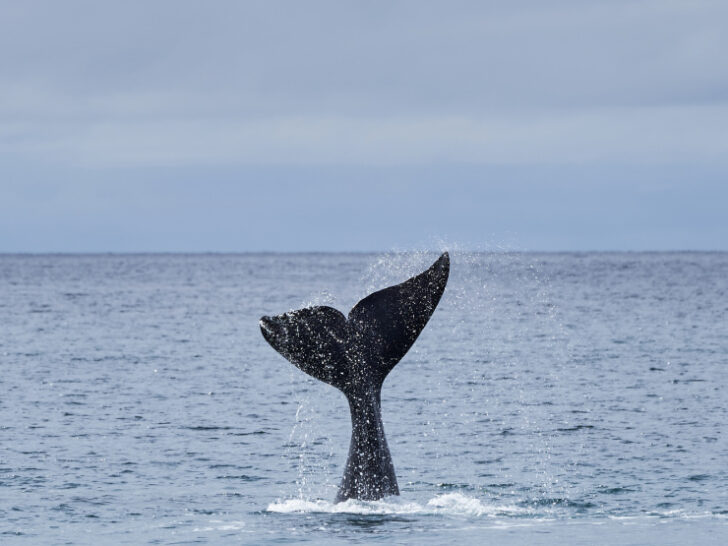
Between June and mid-December is when these mammals arrive to reproduce and the best way to catch sight of them is as part of a boat tour , which can be arranged in nearby Puerto Madryn or on the peninsula itself at Puerto Pirámides. Between mid-February and mid-April, orcas can also be seen at high tide on the beaches snatching sea lions from the shore.
18. Meet Welsh settlers in Gaiman
You’ll likely be surprised to learn that Argentina has the highest number of Welsh speakers outside of the United Kingdom. It’s all down to the Welsh settlements found in the Patagonian steppe, where 153 hardy arrivals from Europe landed on the shores of the Chubert Province in 1865.
Now over a hundred years later, these remain the epicentre of Welsh-Argentine culture. Tours from Trelew (itself an attractive but useful base) take you to quintessentially Welsh Gaiman where you can indulge in a very Welsh activity – afternoon tea – in one of the traditional teahouses dotted around the town.
19. Discover the 10,000-year-old cave paintings at the Cueva de las Manos
Tucked into the recesses of a large cave lie one of Argentina’s most significant prehistoric discoveries. Now known as the Cueva de las Manos – the Cave of Hands – this site is covered by around 800 handprints, which are thoughts to have been marked on the wall around 7370 BCE.
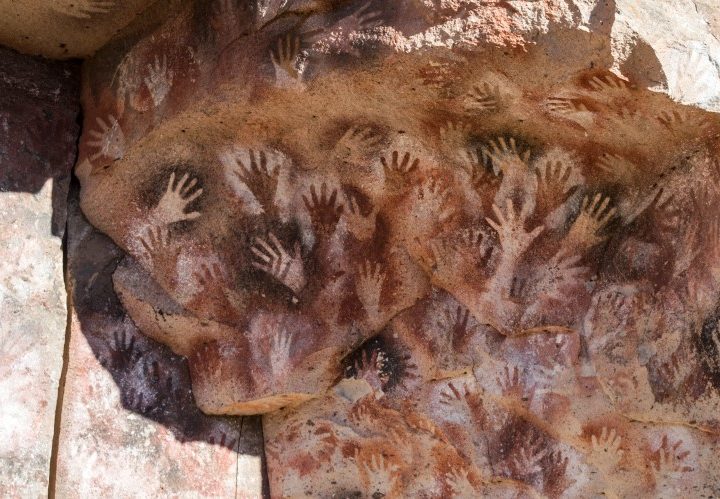
You can take a tour from Perito Moreno or Los Antiguos or drive yourself here with a hire car ; one-hour tours ($12 USD) depart from the entrance to the site.
20. Stretch your legs in Los Glaciares National Park
Those who crave adventure should add Los Glaciares National Park to their Argentine itinerary. Situated deep into Argentine Patagonia near the Chilean border, this national park stretches north to south along the eastern edge of the incredible hielo sur , the Southern Patagonian Ice Field.
In fact, a quarter of this national park sleeps beneath ice, with much of it high above ground level and caught in the granite spires of the mountains that dominate this terrain. It’s one of the most beautiful places in Patagonia and Argentina as a whole.

The most iconic is the 3,405-metre Monte Fitz Roy, beneath which sits the glacier-meltwaters of Laguna de los Tres – and to which hikers make their pilgrimage along a challenging one-day trek. This hike departs from the nearby town of El Chaltén, which is considered the national trekking capital.
Other paths abound for nature lovers and trekkers alike, including the 70-kilometre Huemul Circuit, while visitors will fall swiftly in love with the park’s glorious blend of high-altitude mountains and low-elevation steppe, that’s punctuated by freshwater lakes and rich in wildlife, including Andean condors, rare huemul deer and even pumas.
21. Stay at a traditional Patagonian ranch
Sheep ranching in the late 19th century saw both Argentine and Chilean Patagonia become some of the most important sheep farming areas in the world. Ranches built to house the farmers are some of the only remaining relics of this boom and you can even stay in one of these historic, and often remote, homes.
One of the best is Estancia La Estela , a family-run ranch that sits on the shores of Lago Viedma equidistant between El Calafate and El Chalten and offers horseback riding excursions, as well as traditional lamb barbecues.

22. Catch calving icebergs at the Perito Moreno Glacier
Glacier El Perito Moreno is Argentina’s most famous glacier , sitting within the mountainous terrain of Parque Nacional Los Glaciares (Los Glaciares National Park) in Patagonia and one of the reasons why Argentina is among the best countries in South America for dazzling natural landmarks .
Situated just a short bus journey from the town of El Calafate, this ice giant kneels in the grey-blue water of Lago Argentino – one of Argentina’s most stunning lakes – covers an incredible 25,000 hectares and calves egg-blue icebergs at a remarkable frequency from its frigid tongue.
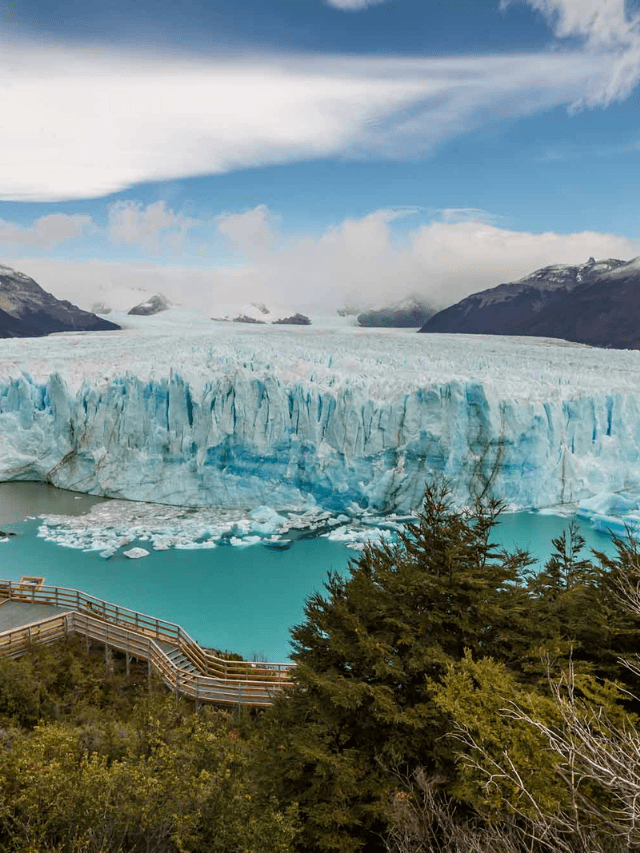
The best way to catch this remarkable phenomenon is from the boardwalks situated a few hundred metres from its snout; late afternoon after the ice has warmed during the day is the most likely time to see it happening.
23. Go to the ends of the earth in Ushuaia
Right at the very tip of the South American continent sits Argentina’s southernmost city: Ushuaia.
Described by many as at the very ends of the earth, Ushuaia has a magical quality, aided no end by its spellbinding scenery: situated at the edges of Tierra del Fuego island, it’s hemmed in by the Beagle Channel in the south and snow-heavy mountains in the north.
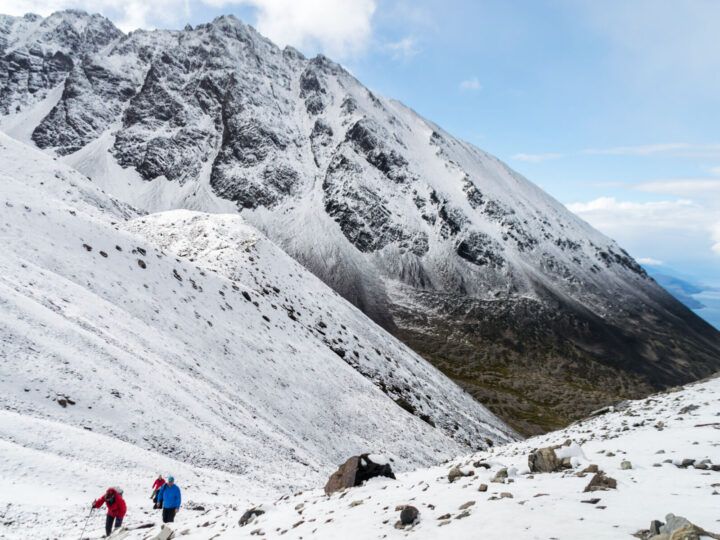
Founded as a penal colony, Ushuaia has a curious history. There’s no better place to learn about it than at the vast and fascinating Museo Maritimo y Museo del Presidio , which is set in the city’s former prison.
Alternatively, head for the White Continent from here to go to the true ends of the earth: expedition cruises to Antarctica leave from here, many of which visit Cape Horn along the way.
Need some advice for choosing an Antarctica cruise? I highly recommend Swoop Antarctica, whose staff have extensive, first-hand experience of sailing to Antarctica and, because they sell cruises for all the well-known companies, can give you handy, impartial advice for choosing the one that best suits you.
Check out their cruises to the Antarctic Peninsula – for a chance to set foot on mainland Antarctica and explore some of the most beautiful parts of the continent – and to South Georgia and the Falklands – for a wildlife bonanza.
We’ve also explored when’s the best time to visit Antarctica – which I highly recommend reading before you start considering a trip. The Antarctica travel season is short and the experiences in different months vary wildly.
24. Hike in the superlative scenery of Tierra del Fuego National Park
West of Ushuaia lies another of Patagonia’s finest national parks. Packed with day hikes that take in stupendous views across dense forests of southern beech and onto the watery depths of the Beagle Channel, Parque Nacional Tierra del Fuego (Tierra del Fuego National Park) is one of the must-visit destinations in Argentine Patagonia.
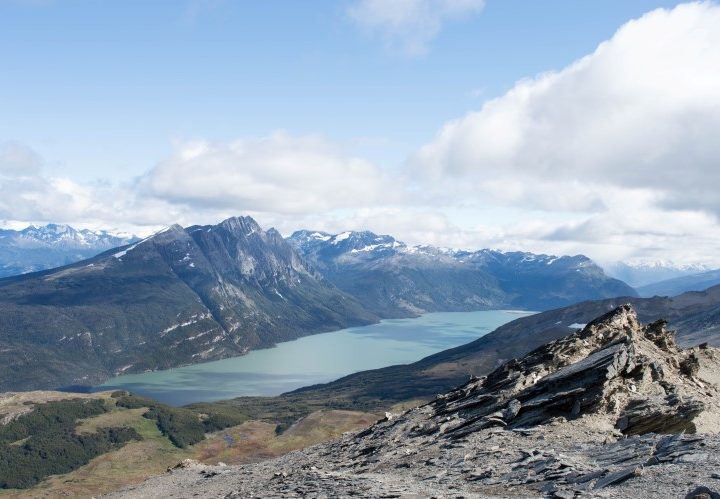
You’ll find plenty of birdlife, including condors and albatrosses, as well as the Southern Fuegian Railway.
Better known as the Train to the End of the World , this 500 mm gauge steam railway was originally used to transport prisoners working to chop timber and now takes you deep into the national park on the final seven kilometers of track. It’s a bit of a tourist trap, but if you love your railways, then it’s a must-do activity.
25. Visit Tierra del Fuego’s first estancia
Founded in 1886 by Anglican missionary Thomas Bridges, Estancia Harberton takes the title of the island’s first ranch. Now operated by Bridges’ descendants, and with the excellent Museo Acatushún that showcases the area’s marine mammals and bird species at its heart, it’s a worthwhile place for a day trip.
Boat tours from Ushuaia take you via the Beagle Channel, the 240-km strait separating Tierra del Fuego from Chile, and where colonies of fur seals, Magellanic penguins, and cormorants can be spotted. Keep your eyes peeled for whales and dolphins in the water.
FAQs about Argentina
What is the most beautiful part of argentina.
Patagonia is arguably the most beautiful part of Argentina. Some would not agree, as much of it is wild and barren, but it’s these qualities that equally make Patagonia so enchanting. In this vast region, you’ll find towering glaciers, vast, unspoiled lakes, and endemic wildlife, with renting a car and taking a road trip around Patagonia , as well as hiking in the region’s national parks , two of the best ways to dive into the region’s beauty.
Is Argentina safe to visit?
Argentina is ranked 68th in the 2021 Global Peace index and third among the safest South American countries . With that said, it’s best to keep some safety considerations in mind. For instance, avoid dark alleys at night and don’t wear anything flashy when wandering the city’s streets. Read our guides on safety in Buenos Aires and staying safe in Argentina for more information.
Is Argentina expensive to visit?
On average, the cost of living in Argentina is lower than in the US or Western Europe, meaning Argentina is affordable for travelers. However, flights can be expensive (considerably more so than in neighboring Chile ), with long-distance bus travel often a much more affordable way to cover large distances. Staying on a budget is not impossible here; cooking your own meals, not dining out often, and using public transportation can help trim down your expenses. Learn more about traveling to Patagonia on a budget .
Is English widely spoken in Argentina?
Many people in Argentina speak English, although only a small percentage speak it fluently. In cities familiar with tourism, such as Buenos Aires and Mendoza, you can get by with English as most restaurants provide English menus and museums have English-speaking tour guides. This may not be the case in a small town deep in Patagonia. In that case, we recommend learning basic Spanish so you’ll be able to ask for directions and prices, hire a local guide, or join a group of experienced travelers.
Travel Guide Argentina
Book your individual trip , stress-free with local travel experts
Select Month
- roughguides.com
- South America
- Travel guide
- Itineraries
- Local Experts
- Travel Advice
Plan your tailor-made trip with a local expert
Book securely with money-back guarantee
Travel stress-free with local assistance and 24/7 support
Annie, Canada
What a great trip! It was so easy to communicate, got all the answers to my many questions. What a trip! Argentina wasn't on my bucket list, now I NEED to ...
Travel to Argentina and you’ll be rewarded with natural wonders and one of the world’s most stylish capital cities, Buenos Aires . Stretching from the Tropic of Capricorn towards the tip of Antarctica, Argentina encompasses a staggering diversity of terrains. You’ll find everything from lush wetlands to the end-of-the-world archipelago of Tierra del Fuego. Its most emblematic landscapes are the flatlands of the Pampas and the dramatic steppe of Patagonia. Read our guide to Argentina for everything you need to know before you go.
Argentina travel facts
Where to go in argentina, best time to go to argentina.
- How to get to Argentina
How to get around in Argentina
Best places to visit in argentina, argentina travel itineraries, argentine culture, activities in argentina.
Size: Argentina is the world’s eighth-largest country by area.
Population: With a population of around 45 million Argentina is one of the least densely populated countries on the planet.
Origins: Some 97 percent of Argentines are of European origin, largely of Spanish or Italian descent.
Exports: Best known for its beef, Argentina is also a leading producer of wine, wheat, fruits and vegetables.
Nobel Prizes: Argentines have twice been awarded the Nobel Peace Prize. Carlos de Saavedra Lamas, in 1936, for his peace efforts in South America, and Adolfo Pérez Esquivel, in 1980, for his defence of human rights.
Ancient history: The remains of the largest-known dinosaur – the Patagotitan mayorum , were discovered by chance by a farm worker in Patagonia in 2008.
Movies: Argentina has a vibrant film industry and has twice carried off an Oscar for best foreign language film. La historia oficial (The Official Story) won in 1985 and El secreto de sus ojos (The Secret in Their Eyes) in 2010.

Typical colorful houses and facades in the famous La Boca district in Buenos Aires, Argentina © Peter Zaharov/Shutterstock
Argentina has many beautiful sights: the waterfalls of Iguazú; the spectacular Glaciar Perito Moreno; whale-watching off Península Valdés; the handsome lakes and mountains around Bariloche. If you’re planning to travel to Argentina, bear in mind the long distances between key destinations – it’s a huge country.
Many of Argentina’s most rewarding destinations are also its least well known. These include the Ibera Wetlands (Esteros del Iberá), a huge network of lagoons offering close-up encounters with cormorants and caymans. Likewise the Antofagasta de la Sierra, a remote village set amid frozen lakes mottled pink with flamingos; or Laguna Diamante, a high-altitude lake backed by a volcano. Climate and distance mean it’s more sensible and rewarding to concentrate on one or two sections of the country when planning your travel.
Buenos Aires
Buenos Aires is likely to be your point of entry, as it has the country’s main international airport, Ezeiza. It is an exciting, vibrant city, with an intriguing blend of European architecture and a local flair. You can round off a day’s sightseeing with a tango show, dinner at one of the dozens of fabulous restaurants, or a hedonistic night out.
Traveling to Buenos Aires? Don't miss the opportunity to choose the best places to stay in the city .
The Litoral
Due north lies the Litoral , bordering Uruguay, Brazil and Paraguay. Here you’ll find the Iguazú falls.
Quebrada de Humahuaca
A highlight in the country’s landlocked northwest is the Quebrada de Humahuaca, a fabulous gorge lined with rainbow-hued rocks. Nearby, in the Valles Calchaquíes, a chain of stunningly scenic valleys, high-altitude vineyards produce the delightfully flowery torrontés wine.
Sprawling across Argentina’s broad midriff are the Pampas, arguably the country’s most archetypal landscape. This subtly beautiful scenery is punctuated by small towns, the occasional ranch and countless clumps of pampas grass (cortaderas). The Pampas are grazed by millions of cattle and planted with huge soya and wheat fields.
They are also where you’ll glimpse traditional gaucho culture, most famously in the charming pueblo of San Antonio de Areco. Here, too, are some of the classiest estancias, offering a combination of hedonistic luxury and horseback adventures.
Central Sierras and Cordoba
As you head further west, the Central Sierras loom: the mild climate and beautiful scenery of these ancient highlands have attracted holiday-makers since the late nineteenth century. Within reach is Córdoba , the country’s colonial-era second city.
Keep going west and you’ll get to the Cuyo, with the highest Andean peaks as a snow-capped backdrop; here you can discover one of Argentina’s most enjoyable cities, the regional capital of Mendoza , also the country’s wine capital.
Argentina is home the lion’s share of the wild, sparsely populated expanses of Patagonia (the rest belongs to Chile). It also possesses y the most populous half of the remote archipelago of Tierra del Fuego . These are lands of arid steppe hemmed by the southern leg of the Andes – a row of majestic volcanoes and craggy peaks interspersed by deep glacial lakes . For many people, Patagonia is the first page they turn to in any guide to Argentina.
On the Atlantic side of Patagonia, Península Valdés is a must-see for its world-class marine fauna, including southern right whales, elephant seals and orcas. You may like to trace the region’s associations with Darwin and his captain Fitz Roy in the choppy Beagle Channel off Ushuaia. You could track down the legacy of Butch Cassidy, who lived near Cholila, or of the Welsh settlers whose influence can still be felt in communities like Gaiman, Trelew and – further inland – Trevelin.

Ushuaia Harbor, Tierra del Fuego, Argentina © artincamera/Shutterstock
Discover more places in Argentina

- The Litoral and the Gran Chaco Travel Guide
- Mendoza and El Cuyo Travel Guide
- The Northwest Travel Guide
- Patagonia Travel Guide
- Tierra del Fuego Travel Guide
In this section of our Argentina travel guide we’ll look at the best times to visit.
Spring is perhaps the best time to go to Argentina. The weather in Argentina in spring (Sep-Nov) is perfect almost everywhere, although icy weather is still possible in the far south.
Summer (Dec–Feb) is the only time you can climb the highest Andean peaks, such as Aconcagua. It's also the most reliable time of year to head for Tierra del Fuego, though it can snow there at any time. Buenos Aires is usually hot and sticky in December and January. You should also avoid parts of the north, as temperatures can be scorching and roads flooded by heavy storms.
Autumn (March and April) is a great time to visit Argentina – particularly Mendoza and San Juan provinces for the wine harvests. Visit Patagonia and Tierra del Fuego to see the beech groves as their leaves change colour.
The winter months of June, July and August are obviously the time to head for the Andean ski resorts. Blizzards can cut off towns in Patagonia in winter, and many places in the region close from April to October. Temperatures in the north of the country should be pleasant at this time of year, though Buenos Aires can be bleak in July and August.
A final point to bear in mind when it comes to Argentina travel: many locals take their holidays in January, around Easter and in July. Transport and accommodation can get booked up fast and rates can double. Read more about the best time to visit Argentina .
Though some people travel to Argentina overland, the majority of people arrive via Buenos Aires’ international airport, Ezeiza.
In general, airfares to the country tend to be quite high, but they do vary depending on the route and the season. The highest fares for travel to Argentina are between December and February, around Easter and in July and August. You’ll get the best prices during low season: March to June and September to November. Note also that flying at weekends means higher prices.
Flights from the UK and Ireland
Several airlines travel to Argentina from the UK. British Airways and budget airline Norwegian are the only airlines that fly direct from London. Iberia via Madrid skimps on creature comforts but is often cheap.
There are no direct flights from Ireland to Argentina. If you’re trying to keep costs down, consider flying to London with an economy airline and making a connection. Or, you can fly direct to New York or Miami and catch an onward flight from there.
Some routes allow you to take stopovers on the way – sometimes for free. Potential stopovers include Bogotá, Rio and São Paulo in South America; Boston, Chicago, Dallas, Houston, Miami, Newark, Los Angeles and Washington DC in the US; and Frankfurt, Madrid, Milan, Paris and Rome in Europe.
Flights from the US and Canada
Several airlines, including American Airlines, United and Aerolíneas Argentina, offer daily non-stop flights from the US to Buenos Aires. Flying times to Buenos Aires are around 11 hours from New York and Chicago, and nine from Miami.
There’s less choice if you’re planning to travel to Argentina from Canada, with Air Canada offering the only flight into the country – from Toronto via Santiago de Chile. Consider looking for connecting flights with a US carrier.
Flights from Australia, New Zealand and South Africa
The best flight deal to Argentina from Australia and New Zealand is offered by Air New Zealand. In Australia, flights to Argentina leave from Sydney or occasionally Melbourne. There are no direct flights from New Zealand, so you will need to connect elsewhere.
Flights from South Africa to Argentina leave from Cape Town and Johannesburg and usually go via São Paulo; Airfares depend on both the season and duration of stay.
This section of our Argentina travel guide will help you plan your travel around the country.
Getting around Argentina takes longer than you might think; distances are huge, and you are likely to spend a considerable part of your budget on travel. Ground transport (mostly by bus) will give a true impression of the scale of the country and a chance to see the landscape. If you’re planning to cover big distances when you travel in Argentina – especially around Patagonia – domestic flights can save a day or more. The inter-city bus network is extensive but services in remote areas can be poor; in these places, it is worth considering car rental. Train services are run-down and limited and not generally a viable method of traveling in Argentina.
Seven Patagonian lakes – their sparkling waters emerald, ultramarine, cobalt, turquoise, cerulean, sapphire and indigo – linked by a rugged mountain road: a magical route best explored in a 4WD.
Known simply as the Cataratas, the world’s most awe-inspiring set of waterfalls is set among dense jungle, home to brightly coloured birds and butterflies.
The undisputed highlight of La Rioja Province is a World Heritage Site dominated by giant cliffs of deep pink sandstone. Once home to dinosaurs, it’s now the protected habitat of condors, guanacos and foxes.
A visit to one of the world’s few advancing glaciers is a treat for the eyes and the ears; count the impossibly varied shades of blue as you listen to a chorus of cracks, thuds and whines.
The shimmering lagoons of these vital wetlands attract myriad birds, from tiny hummingbirds to majestic herons.
A prehistoric mural, an early finger-printing exercise or ancient graffiti? Whatever it is, this delicate tableau of many hands is one of the continent’s most enchanting archaeological sites.
The prestigious resting place of Argentina’s great and good – even Evita sneaked in – this cemetery is one of the world’s most exclusive patches of real estate.
Take a stroll down the cobbled streets of this bohemian barrio full of tango bars and antique shops, talented street performers and decaying grandeur.
Despite frigid temperatures and extreme altitude – 6,959m – the highest peak outside the Himalayas can be climbed with the right preparation and a knowledgeable guide, making for a world-class mountaineering experience.
Rugged gauchos, nodding pampas grass and herds of cattle are the famous inhabitants of Argentina’s most archetypal landscape.
Whitewashed settlements nestled against polychrome mountains, dazzling salt flats, lush valleys and cactus forests, windswept steppe and deep gorges – some of the planet’s most incredible scenery.
Once Argentina’s most feared penal colony, now the world’s southernmost city, Ushuaia sits proudly on the Beagle Channel, backed by serrated peaks and within striking distance of Tierra del Fuego National Park.
Take a boat or paddle a kayak around the swampy islets and muddy creeks of Tigre. This subtropical town on the capital’s doorstep acts as a gateway to the continent’s second-largest river system.
The world’s biggest dinosaurs once roamed Neuquén Province. Nothing will convey their immensity more than standing underneath their skeletons or seeing their giant footprints in the rock.
Perhaps the most beautiful city in Argentina, Salta La Linda (Salta the Fair) boasts well-preserved colonial architecture, a backdrop of soaring peaks and some wonderful places to sleep and eat.

Mountain Plateau La Puna, Northern Argentina © Galyna Andrushenko/Shutterstock
We’ve expanded our Argentina travel guide to include the following itineraries. They will take you to every corner of the country – and you’ll learn plenty about Argentina no matter which one you choose. You’re unlikely to complete the list, but it will give you a flavour of travel in Argentina and what we can plan and book for you with our Tailor-Made Trips service www.roughguides.com/trips .
Travel ideas for Argentina, created by local experts

The Great Lakes and Glaciers of Argentina
Experience the great outdoors, Argentina-style! Marvel at jaw-droppingly beautiful Patagonian landscapes, walk the shores of deep-blue lakes guarded by snow-capped mountains at Bariloche, explore the stunning Perito Moreno Glacier – experience all of this, and much more, with this unique trip!

From Chile to Argentina, across the Andean Lakes
Travel from Chile to Argentina across the stunning Andean Lakes, also known as the Lakes District. Beginning in Santiago, you will travel to Puerto Varas, in Chile, and then across the lakes to Bariloche, Argentina, taking in the stunning mountain scenery, before ending your trip in Buenos Aires.

An adventure across three countries: Brazil, Argentina & Uruguay
A trip filled with history, culture and nature spread out over three beautiful and unique countries, Brazil, Argentina and Uruguay. Visit some of the most stunning sites, like the Sugar Loaf Mountain, Iguazu Falls and UNESCO World Heritage site Colonia del Sacramento, during this 14-day trip.

Argentinean Patagonia: from the Coast to the Andes
Explore the region's most fascinating corners: sea life in Puerto Madryn awaits before you head to the most southern city in the world: Ushuaia. Discover Tierra del Fuego before heading out to El Calafate and Bariloche, really soaking in the Argentinean vibes.
_listing_1621160495398.jpeg)
Unforgettable Argentina
Argentina has a lot to offer travellers, in this itinerary you will explore the highlights in just two weeks. From busy Buenos Aires you will fly to Iguazu to marvel at the majestic waterfalls before heading south to Puerto Madryn, Ushuaia and El Calafate. Unforgettable Argentina awaits!

Magical Patagonia and Cultural Buenos Aires
Combine exploring the contemporary city of Buenos Aires, with all its luxuries and grand, historical buildings, together with the wild, rugged land of Patagonia. Take in the culture and observe the landscape and wildlife to gain a complete picture of the true Argentina.
Argentina Itinerary 1: Wonders of Nature
Much of Argentina’s nature highlights are in Patagonia, but there are unmissable sights further north, too, if you can spare a month or so.
Watch whales, seals and sea lions basking in the cool waters off this peninsula in northern Patagonia .
The biggest colony of Magellanic penguins in South America is a delightful sight, and the trip there will likely take you past guanacos, armadillos and more.
Situated on the Beagle Channel, teeming with birds, sea lions and king crabs, Ushuaia provides a base for exploring nearby Tierra del Fuego national park.
One of Argentina’s most visited sights. Watch enormous chunks of blue ice calve off the city-sized glacier or don crampons to walk on top of it.
The northern section of Los Glaciares national park provides some of the country’s best trekking, among jagged peaks and turquoise lakes.
Up in the dry northwest, the multicoloured hues of the Humahuaca make it the pick of the region’s sights.
The enormous Iguazú waterfalls on the Argentina-Brazil border, set in subtropical rainforest, make a steamy, stunning contrast to the icy southern sights.
An enchanting, little-visited ecosystem in Corrientes Province whose marshes are filled with an array of wildlife.
A surprisingly verdant river community, just outside Buenos Aires. It makes for a gentle but impressive end to a tour of Argentina’s natural highlights.
Argentina Itinerary 2: Ruta 40
Like Route 66 in the US, Argentina’s Ruta 40 has earned legendary status, inspiring songs, books and of course road trips. It’s the country’s longest highway, running from Patagonia to Bolivia. Count on six weeks if you want to take in all 5224km of “la Cuarenta”.
Ruta 40 starts here, by the Strait of Magellan. It’s a zigzagging route through windswept Patagonian steppe.
Just off the Ruta 40, in the Patagonia wilderness, this World Heritage Site is one of South America’s finest examples of ancient rock art.
This picturesque city is the gateway to the Nahuel Huapi park and Argentina’s Lake District, home to pristine alpine-like scenery, dramatic mountain lakes and ancient trees.
A remote land of rosy lava, ebony gorges, deep karstic caves and flamingo-flecked lagoons in Mendoza Province.
Often inaccessible, this lagoon rewards the adventurous. Enjoy a picnic on the banks of a crystalline brook as you admire the silhouette of Volcán Maipo.
The road in La Rioja Province winds through polychrome mountains that contrast with the verdant vegetation along the riverbanks below.
Stop off at this Catamarca highland village for a top-notch poncho – methods of weaving have been maintained since pre-Hispanic times.
Ringed by mountains, this area of snow-white salt flats is a good place to spot llamas and vicuñas.
Argentina Itinerary 3: Wine and Dine
Travel to Argentina, and you can find excellent-quality food and drink anywhere. Beef plays a part, of course, but there’s more to the country’s culinary offering. Allow two to three weeks for this foodie guide to Argentina.
The country’s capital has the most cosmopolitan selection of restaurants – including its famous puertas cerradas – with inventive cooking at reasonable prices.
Stay on an estancia to enjoy the best barbecued beef you’ll taste anywhere, right in the fertile heartland where it comes from.
- Mendoza Spend your days – and nights if you wish – at a bodega, tasting fine malbec wines with the snow-streaked Andes as a backdrop.
A good place to try the distinctive northwestern cuisine, including the classic empanada, a pasty filled with meat or vegetables, or locro stew.
Vibrant and stylish Rosario overlooks the Río Paraná and is an excellent place to dine on the local river fish, such as dorado, boga and surubí .
The capital of Argentine Tierra del Fuego is the best place to sample centolla (king crab), plucked fresh from the Beagle Channel.

Cathedral in Cordoba, Argentina © diegorayaces/Shutterstock
Travel advice for Argentina
From travel safety to visa requirements, discover the best tips for visiting Argentina
- Eating and drinking in Argentina
- Getting around Argentina: Transportation Tips
- Travel Tips Argentina for planning and on the go
- Best time to visit Argentina
Our travel tips for Argentina will help you enjoy a stress-free trip to the country.
Accommodation in Argentina
Accommodation in Argentina runs the gamut from campsites and youth hostels to fabulously luxurious estancias (ranches) and opulent hotels offering every conceivable amenity. Between these two extremes you’ll find a whole variety of establishments, including charming old colonial houses with balconies and dark and seedy hotels that lack so much as a window. Informal room rental is also common in towns with seasonal influxes of tourists but too few hotels to cope.
In terms of newspaper circulation, Argentina is Latin America’s most literate nation, and it has a diverse and generally high-quality press. Its television programming is a rather chaotic amalgam of light-entertainment shows and sports, and its radio services tend to fall into one of two categories: urban mainstream commercial channels or amateur ones designed to serve the needs of local rural communities.
Economy and exchange rates
The economic situation in Argentina has been volatile in recent years, and it is advisable to check the latest before you travel. Note that hotels and other types of commerce, especially at the luxury end of the market, often quote prices in US dollars rather than Argentine pesos.
Costs and Money
Notes come in 5, 10, 20, 50, 100, 200, 500 and 1000 denominations, while 1 and 2 peso coins and 50, 25, 10 and 5 (rare) centavo coins are in circulation. Ask for small denomination notes when exchanging if possible, break bigger ones up at places where they obviously have plenty of change (busy shops, supermarkets and post offices).
Travel to Argentina doesn’t raise any major health worries. Make sure you have the standard vaccinations or updates – tetanus, polio, typhoid and hepatitis A. There have been outbreaks of dengue fever in the far north; other mosquito-related illnesses to be aware of are yellow fever, malaria and (in the far north) zika.
The tap water in Argentina is generally safe to drink, if sometimes heavily chlorinated, but you may prefer to err on the side of caution in rural areas. Mineral water is good and widely available.
Altitude ( puna ) sickness is a condition encountered at anything over 2,000m, but most serious at altitudes of 4,000m and above. It’s a common ailment for travellers entering high altitude areas of the country. Mild symptoms can include headaches, nausea, dizziness or insomnia. However, more severe symptoms can arise, in which case you should seek medical advice. Read more about altitude sickness in Argentina .
It is a good idea to take out an insurance policy before travelling. In Argentina, insurance is more important to cover theft or loss of belongings and repatriation than medical treatment – the country has a state medical system that is free for emergencies.
LGBTQ travellers in Argentina
Thanks to progress in recent years, including the equal marriage law passed in 2010, the attitude in Argentina towards LGBTQ people is quite open. Violent manifestations of homophobia are rare. However, rural areas of the country still do their best to act as if homosexuality doesn’t exist, so it’s best to act a little more discreetly there.
Travel visa requirements for Argentina
Citizens of the US, Canada, Australia, the UK, Ireland, New Zealand and most European countries do not need a visa for trips to Argentina of up to ninety days. All visitors need a valid passport. At international airports you will have your thumbprint and photo digitally recorded on arrival.
If you are planning to travel to Argentina alone with a child you must obtain a notarized document certifying both parents’ permission for the child to travel (check with the embassy). When leaving the country, you must obtain an exit stamp.
Travel safety in Argentina
With the effects of economic crises in 2001 and 2009 still lingering and poverty at 25 percent, Argentina has lost its reputation as a totally safe destination. However, any concerns you have should be kept in perspective. For the majority of those who travel to Argentina, the chance of falling victim to crime remains small. Most of the more violent crime (concentrated in the big cities) tends to be directed at wealthy locals rather than foreign visitors.
In Buenos Aires, the vast majority of visitors have no problems. Follow the basic rules and only carry only what you need for that day, and conceal valuable items such as cameras and jewellery. Always be cautious when withdrawing cash from ATMs. Remember that pickpockets most commonly hang around subte (subway) stations and bus terminals (particularly Retiro in the capital), and on crowded trains and buses.
Car theft is a common occurrence; if you are renting a car, check the insurance will cover you, and always park in a car park or where someone will keep an eye on it. When driving in the city, keep windows closed and doors locked.
Drug use, particularly of marijuana and cocaine, is fairly common among the younger generation, but the penalties for using either are stiff. We strongly advise against buying or using them – quite apart from the risks inherent in the substances themselves, doing so may bring you into contact with some very dangerous people.
If you are unlucky enough to be the victim of a robbery ( asalto ) or lose anything of value, you will need to make a report at the nearest police station for insurance purposes. Check that the police add the date and an official stamp ( sello ).
Argentina’s mores reflect its European ancestry. Apart from getting used to the late dining hours, most travellers from the West will have little trouble fitting in.
One area of etiquette that will probably be new to you is the very Argentine custom of drinking mate. Mate comes with its own set of rules, but foreigners will be given lots of leeway here, as in other areas of social custom – a faux pas is more likely to cause amusement than offence.
Sexual harassment and discrimination
Women planning on travelling alone to the country can do so with confidence. Some machista attitudes do persist but few people will find it strange that you are travelling unaccompanied.
When greeting people or taking your leave, it is normal to kiss everyone present on the cheek (just once, always the right cheek). Shaking hands tends to be the preserve of very formal situations, though some Argentines may offer a hand rather than a cheek if they know you’re foreign.
Tipping is not widespread in Argentina, with a couple of exceptions. It’s normal to give hairdressers and beauticians a five to ten percent tip and you should add a gratuity of ten percent to restaurant bills if service is not included.
The bulk of Argentina’s festivals are found in the Northwest, owing to its attachment to tradition and high proportion of ethnic communities. Pre-Columbian revivals, Catholic and secular celebrations are observed. On the whole, holidays such as Christmas and Easter are more religious, family-focused occasions than they are in Europe and the US. Although some European traditions – such as eating chocolate eggs at Easter – are starting to take off, the festivals are generally a lot less commercial.
When shopping in Argentina there’s no real tradition of haggling, although you can always try it when buying pricey artwork or antiques. Expensive services such as excursions and car rental are also obvious candidates for bargaining, while hotel rates can be beaten down off-season, late at night or if you’re paying in cash ( en efectivo ).
Argentines suffer an incurable addiction to sport, and you’ll hear informed and spirited debate in bars on subjects as diverse as tennis, rugby, basketball and the uniquely Argentine equestrian sport of pato .
Outdoor activities
Argentina is a highly exciting destination for outdoors enthusiasts: world-class fly-fishing, horseriding, trekking and rock-climbing opportunities abound. In addition there’s white-water rafting, skiing, ice climbing and even expeditions onto the Southern Patagonian Ice Cap.
Top image: Fitz Roy, Argentina © Dmitry Pichugin/Shutterstock
Criollo culture
Most closely translated as “creole”, criollo refers to a way of life born in the Americas, but with Old World roots. In Argentina, it is a byword for that which is absolutely Argentine – the culture of the countryside and the gaucho. Key aspects of this include the food – asado barbecues, of course, but also maize-based stews like locro ; clothing – such as baggy riding trousers called bombachas and the espadrille-like alpargatas ; horses – be they for rounding up cattle or playing polo; and a decidedly anti-authoritarian streak in the national character. Even the wealthiest city-dweller is usually keen to prove that he or she is fundamentally a criollo , never happier than when sipping a mate by the fire.
Tango, Argentina’s blues
Tango is not only a dance, or even an art form, it is a powerful symbol, closely associated with Argentina around the world. Essentially and intrinsically linked to Buenos Aires and its multicultural history, it nonetheless has ardent fans all around the country. Rosario and, to a lesser extent, Córdoba, the country’s two biggest cities after the capital, have a strong tango culture, complete with milongas (tango dance halls) and shops to buy the right garb and footwear. And don’t be surprised to find villagers in some remote hamlet, hundreds of miles from Buenos Aires, listening to a scratchy recording of Carlos Gardel – the 1930s heart-throb still regarded as the best tango singer. Some experts argue that tango’s success can be put down to its perfect representation of the Argentine psyche: a unique blend of nostalgia, resignation and heartbroken passion.
The Rough Guides to Argentina and related travel guides
In-depth, easy-to-use travel guides filled with expert advice.

Find even more inspiration for Argentina here

Planning your own trip? Prepare for your trip
Use Rough Guides' trusted partners for great rates

written by Andy Turner
updated 14.08.2024
Ready to travel and discover Argentina?
Get support from our local experts for stress-free planning & worry-free travels.
- Travel advice
Our local experts can design your trip based on your preferences
Warning - You are using an outdated browser. Please upgrade your browser to properly view this website.

- Destinations
- South america
- Useful phrases
Useful Phrase and Pronunciation in Argentina
• Greetings
• In the hotel
• In the restaurant
Of the many versions of Spanish in South America, the Argentine version is among the most difficult to understand. However, it is much better to know a little Spanish when you arrive. English might be spoken at major hotels and by quite a few Argentines in Buenos Aires, but don’t count on it outside the capital.
Pronunciation and Grammar Tips
Argentines tend to use a local vocabulary with little resemblance to classical Spanish, while the local accent imposes a soft “j” sound on the “ll” and “y” and most people speak very rapidly without enunciating clearly. At the same time, when using the second person familiar, Argentines use the form “vos” instead of the more common “tú”. (Note also that in Latin American Spanish the plural form of you is “ustedes” rather than “vosotros,” as used in Spain.) The verb form used with “vos” places the accent on the last, rather than the penultimate syllable (for example, “¿que hacés?” instead of “¿qué hAces?” – what are you doing?).
Yes Sí
No No
Thank you Gracias
You’re welcome De nada/Por nada
Okay Está bien
Please Por favor
Excuse me (to get attention) ¡Perdón!/¡Por favor!
Excuse me (to get through a crowd) ¡Permiso!
Excuse me (sorry) Perdóneme
Wait a minute! ¡Un momento!
Please help me (formal) Por favor, ayúdame
Certainly ¡Claro!/¡Claro que sí!/¡Por cierto!
Can I help you? (formal) ¿Puedo ayudarle?
Can you show me…? ¿Puede mostrarme…?
I’m lost Estoy perdido(a)
I’m sorry Lo siento
I don’t know No sé
I don’t understand No entiendo
Do you speak English/French/ German? (formal) ¿Habla inglés/ francés/alemán?
Could you speak more slowly, please? ¿Puede hablar más despacio, por favor?
Could you repeat that, please? ¿Puede repetirlo, por favor?
here/there aquí (place where), acá (motion to)/allí, allá, ahí (near you)
What? ¿Qué?/¿Cómo?
When? ¿Cuándo?
Why? ¿Por qué?
Where? ¿Dónde?
Who? ¿Quién(es)?
How? ¿Cómo?
Which? ¿Cuál?
How much/how many? ¿Cuánto?/¿Cuántos?
Do you have…? ¿Hay…?
How long? ¿Cuanto tiempo?
Big, bigger Grande, más grande
Small, smaller Chico, mas chico
I want…/I would like…/I need… Quiero…/Quisiera…/Necesito…
Where is the lavatory (men’s/women’s)? ¿Dónde está el baño(de caballeros/de damas)?
Which way is it to...? ¿Como se va a...?
Hello! ¡Hola!
Hello Buenos días
Good afternoon/night Buenas tardes/noches
Goodbye/see you later Chau/¡Adios!/Hasta luego
My name is… Me llamo…
What is your name? (formal) ¿Cómo se llama usted?
Mr/Miss/Mrs Señor/Señorita/Señora
Pleased to meet you ¡Encantado(a)!/Mucho gusto
I am English/American/Canadian/Irish/Scottish/Australian Soy inglés(a)/norteamericano(a)/canadiense/irlandés(a)/ escocés(a)/australiano(a)
Do you speak English? (formal) ¿Habla inglés?
How are you? (formal/informal) ¿Cómo está? ¿Qué tal?
Fine, thanks Muy bien, gracias
In the Hotel
Do you have a vacant room? ¿Tiene una habitación disponible?
I have a reservation Tengo una reserva
I’d like… Quisiera…
a single/double (with double bed)/a room with twin beds una habitación individual (sencilla)/una habitación matrimonial/una habitación doble
for one night/two nights por una noche/dos noches
ground floor/first floor/top floor room una habitación en la planta baja/en el primer piso/ en el último piso
In the Restaurant
I'd like to book a table Quisiera reservar una mesa, por favor
Do you have a table for…? ¿Tiene una mesa para…?
breakfast/lunch/dinner desayuno/almuerzo/cena
I’m a vegetarian Soy vegetariano(a)
May we have the menu? ¿Puede traernos la carta (or el menú)?
wine list la carta de vinos
special of the day plato del día/sugerencia del chef
main course segundo/plato principal
Read our practical travel advice on planning a trip to Argentina
Read more from the travel guide to Argentina
- Top attractions
- Historical highlights
- Cultural features
- Plan your trip
- Top restaurants

Winter is here! Check out the winter wonderlands at these 5 amazing winter destinations in Montana
- Travel Guide
- Weird & Amazing
11 Spanish Words With Surprising English Origins
Published: September 2, 2024
by Mari Barba
Did you know that many Spanish words have surprising English origins ? Language often evolves through cultural exchanges, and Spanish is no exception. From everyday terms to more specialized vocabulary, these words have traveled across time and geography to become part of the Spanish lexicon. Some might even surprise you with their roots in English! Whether you're a language enthusiast or just curious, this list will give you a fresh perspective on how interconnected languages can be. Ready to see which words made the cut? Let's dive into the fascinating world of linguistic connections between English and Spanish.
Spanish Words with English Origins
Languages constantly borrow from each other, creating a rich tapestry of words with fascinating histories. Spanish, with its melodic rhythm and vibrant vocabulary, has adopted several words from English. Here are some Spanish words that might surprise you with their English roots.
This word for steak in Spanish comes from the English phrase "beef steak." Over time, it was shortened and adapted to fit Spanish pronunciation, becoming "bistec."
Derived from the English word "snob," this term in Spanish retains the same meaning. It describes someone who looks down on others or is overly concerned with social status.
3. Fútbol
While the sport is universally known, the Spanish term "fútbol" is a direct adaptation of the English word "football." The game itself, along with its name, was introduced to Spain by British sailors and workers.
This word for a political rally or meeting comes from the English word "meeting." It entered the Spanish language in the 19th century, reflecting the influence of English-speaking political movements.
The Spanish word for nylon, "nailon," is a straightforward borrowing from English. It refers to the synthetic fabric invented in the United States in the 1930s.
6. Rascacielos
This term for skyscraper combines the Spanish words "rascar" (to scratch) and "cielo" (sky). However, it was inspired by the English word "skyscraper," reflecting the architectural innovations of American cities.
7. Sándwich
A favorite snack worldwide, the Spanish "sándwich" comes directly from the English word "sandwich." It was named after the Earl of Sandwich, who popularized eating meat between slices of bread.
8. Suéter
The cozy garment known as a sweater in English is called "suéter" in Spanish. This word was adopted into Spanish in the early 20th century as the fashion item gained popularity.
9. Túnel
The Spanish word for tunnel, "túnel," is borrowed from the English word "tunnel." This term became part of the Spanish language as engineering projects and transportation networks expanded.
This word for yacht in Spanish is a direct borrowing from the English word "yacht." It reflects the influence of English-speaking sailors and the popularity of recreational boating.
11. Zíper
The Spanish term for zipper, "zíper," comes from the English word "zipper." This handy invention revolutionized clothing and luggage , and its name was adopted into many languages, including Spanish.
Language Connections You Didn't Expect
Learning about Spanish words with English origins can be eye-opening. It shows how languages borrow from each other, creating a rich tapestry of communication. Words like esnob and fútbol highlight the influence of English on Spanish. This blending of languages helps us understand cultural exchanges and historical connections.
Next time you hear a familiar word in Spanish, think about its journey. It might have roots in English, showing how interconnected our world is. This knowledge can make learning Spanish more interesting and fun. Plus, it can give you a deeper appreciation for both languages.
So, keep exploring these connections. They can offer surprising insights into how we communicate and share ideas across cultures. Language is always evolving, and these borrowed words are a testament to that ongoing process.

- Privacy Overview
- Strictly Necessary Cookies
This website uses cookies so that we can provide you with the best user experience possible. Cookie information is stored in your browser and performs functions such as recognising you when you return to our website and helping our team to understand which sections of the website you find most interesting and useful.
Strictly Necessary Cookie should be enabled at all times so that we can save your preferences for cookie settings.
If you disable this cookie, we will not be able to save your preferences. This means that every time you visit this website you will need to enable or disable cookies again.
Pasaje Zorilla 171 – Local 1
Salta 4400 – Argentina
+54 387 431 3891
Did you travel with us?
Help us improve our services with your feedback.
SATISFACTION SURVEY
WhatsApp us

IMAGES
VIDEO
COMMENTS
ORIGINS ARGENTINA TRAVELS. Life changing experiences, amazing landscapes, cultural exchange and all the kindness of the Argentinian people. Get in touch with us for more details on how we can help you organizing your trip to our country. Follow us: ON SPECIALIZED PRESS.
dESCUBRIENDO ARGENTINA JUNTO A SU PUEBLO. Creemos en un Turismo Responsable y respetuoso valorando lo que la Pacha Mama provee y respetando a las personas que la habitan. Este es el espíritu que intentamos contagiar a los viajeros que nos acompañan en nuestros recorridos. Siempre bajo lineamientos de comercio justo y trabajando ...
Origins Argentina is a travel and tourism agency based in the northwest of Argentina dedicated to provide unique experiences for travelers, designing tailor-made trips all over the country. Our experience in the field and our decision to practice responsible tourism based on fair trade criteria have led us to strengthen ties with different ...
Origins Argentina Travels. 42 reviews. #14 of 62 Outdoor Activities in Salta. Eco ToursHiking & Camping Tours. Write a review. See all photos. About. Morning to enjoy the art of nature and breathtaking landscapes on the Shells Gorge that will take us to the Calchaqui Valley.
Embark on a voyage that celebrates Argentina's rich traditions, enthralling landscapes, and vibrant communities, while fostering meaningful connections and sustainable tourism practices. Why Journey with Origins Argentina Travel? Deep-rooted Stories: At the heart of Origins is a passion for authentic narratives. Traveling with Origins ensures a ...
Origins Argentina Travels: Top service - See 35 traveler reviews, 43 candid photos, and great deals for Salta, Argentina, at Tripadvisor.
Origins Argentina Travels. 42 reviews. #14 of 61 Outdoor Activities in Salta. Eco ToursHiking & Camping Tours. Write a review. See all photos. About. Morning to enjoy the art of nature and breathtaking landscapes on the Shells Gorge that will take us to the Calchaqui Valley.
Connect with Origins Argentina. Locally Owned Tour Operator. Ask a Question. Speaks: Spanish. Origins connects travelers to unique experiences with local communities throughout Argentina, though they have a special connection to the Rural-Tourism Cooperative of the Calchaqui Valley and people of northwest Argentina.
Dec 2, 2023 - Morning to enjoy the art of nature and breathtaking landscapes on the Shells Gorge that will take us to the Calchaqui Valley. A family from El Divisadero, a rural community close to Cafayate, will ...
Origins Argentina Travels, Salta: See 27 reviews, articles, and 22 photos of Origins Argentina Travels, ranked No.19 on Tripadvisor among 53 attractions in Salta.
Argentina has long played an important role in the continent's history. Following three centuries of Spanish colonization, Argentina declared independence in 1816, and Argentine nationalists were instrumental in revolutionary movements elsewhere, a fact that prompted 20th-century writer Jorge Luis Borges to observe, "South America's independence was, to a great extent, an Argentine ...
The activities offered. Hiking & Trekkings. Overland & Excursions
The Best Argentina Travel Guide: What You Must Know Before Visiting Argentina Argentina Travel Tips: Quick Facts. Let's start this post with a selection of essential information you need to know before visiting Argentina. AREA - 2,780,400 km2 (1,073,500 sq mi) POPULATION - 46,057,866 (2024 estimate)
795 Followers, 1,911 Following, 101 Posts - Origins Argentina Travel (@origins_argentina_travel) on Instagram: "Experiencias que cambian la vida..." origins_argentina_travel. Follow. Message. 101 posts. 795 followers. 1,869 following. Origins Argentina Travel. Experiencias que cambian la vida... www.originsargentina.com ...
Northwestern Argentina. 12. Summit the lofty peak of Volcán Aconcagua. The highest mountain outside of the Himalayas, Aconcagua invites adventure seekers and adrenaline junkies looking to summit one of the "Seven Summits" - the highest mountains in each continent.
13 likes, 2 comments - origins_argentina_travel on July 4, 2023: "Paisajes mágicos del Alto Valle Calchaqui. Podes sumarte a esta experiencia que te permitira generar tu propio contenido. 5 y 6 de agosto #fotografia #creadordecontenido #visitsalta #originsargentina #naturelovers".
Skip to main content. Review. Trips Alerts Sign in
Argentina travel facts. Size: Argentina is the world's eighth-largest country by area. Population: With a population of around 45 million Argentina is one of the least densely populated countries on the planet. Origins: Some 97 percent of Argentines are of European origin, largely of Spanish or Italian descent. Exports: Best known for its beef, Argentina is also a leading producer of wine ...
origins argentina travels. Expériences authentiques, paysages incroyables, échanges culturels et l'accueil chaleureux, l'amabilité du peuple argentin. Nous pouvons vous aider à organiser votre voyage à travers notre pays.
Your local travel organizer for Argentina. Anahi 17 reviews. contact Anahi. Best trips in Argentina. A city escape to Buenos Aires. 4 days from 420 USD. see all trips. Your advantages of booking with Insight Guides. Access travel knowledge of selected local experts. Save time & money
Learning about Spanish words with English origins can be eye-opening. It shows how languages borrow from each other, creating a rich tapestry of communication. Words like esnob and fútbol highlight the influence of English on Spanish. This blending of languages helps us understand cultural exchanges and historical connections.
CONTACT US Pasaje Zorilla 171 - Local 1 Salta 4400 - Argentina +54 387 431 3891 [email protected] +54 9 387 413 0545 chantal.origins [email protected] +54 9 387 412 8811 edgar_origins
European Argentines (Spanish: Argentinos Europeos), are Argentines who have predominantly or total European ancestry (formerly called Criollos or Castizos in the viceregal era), belong to several communities which trace their origins to various migrations from Europe and which have contributed to the country's cultural and demographic variety. [2] [3] They are the descendants of colonists from ...